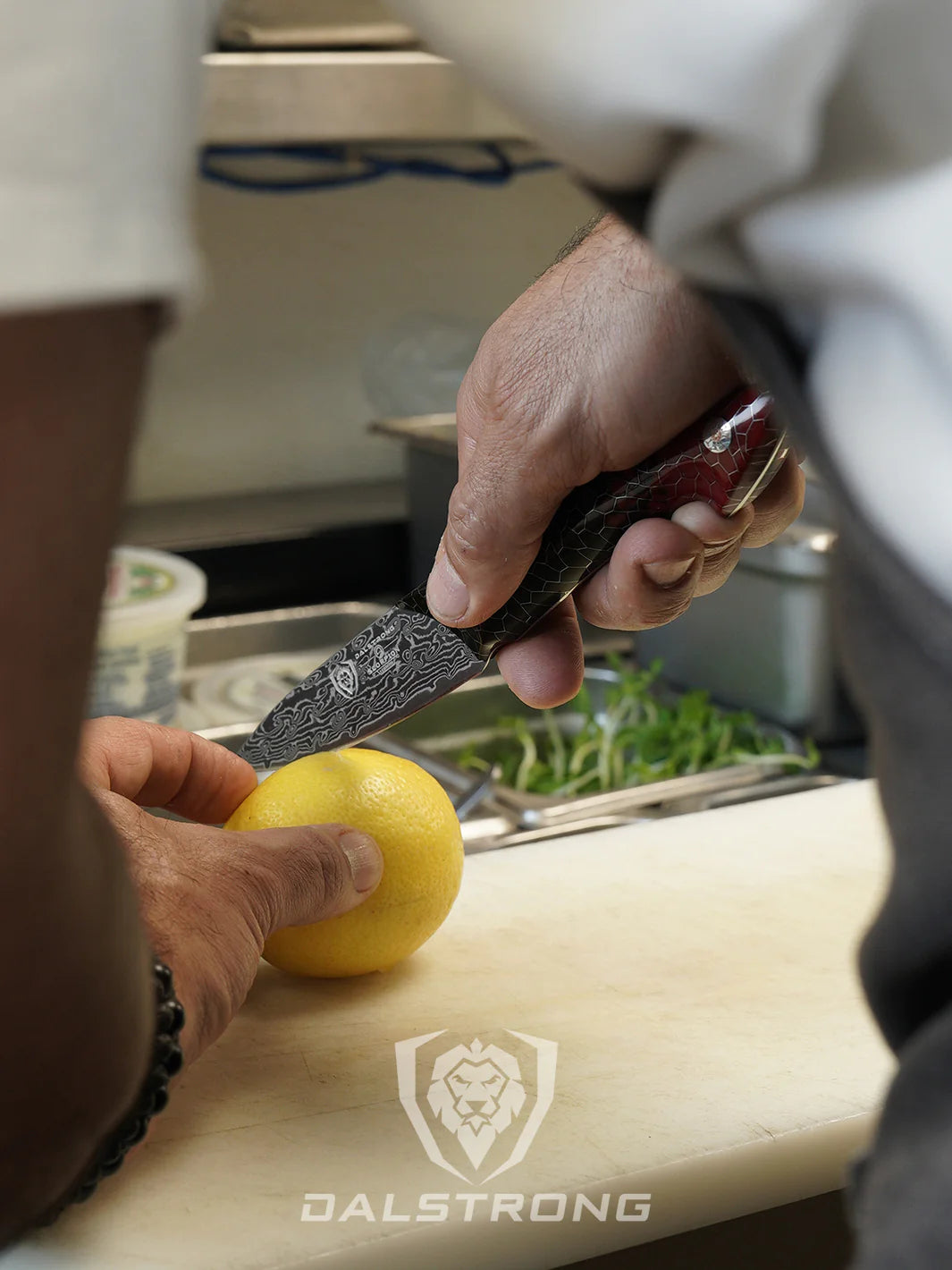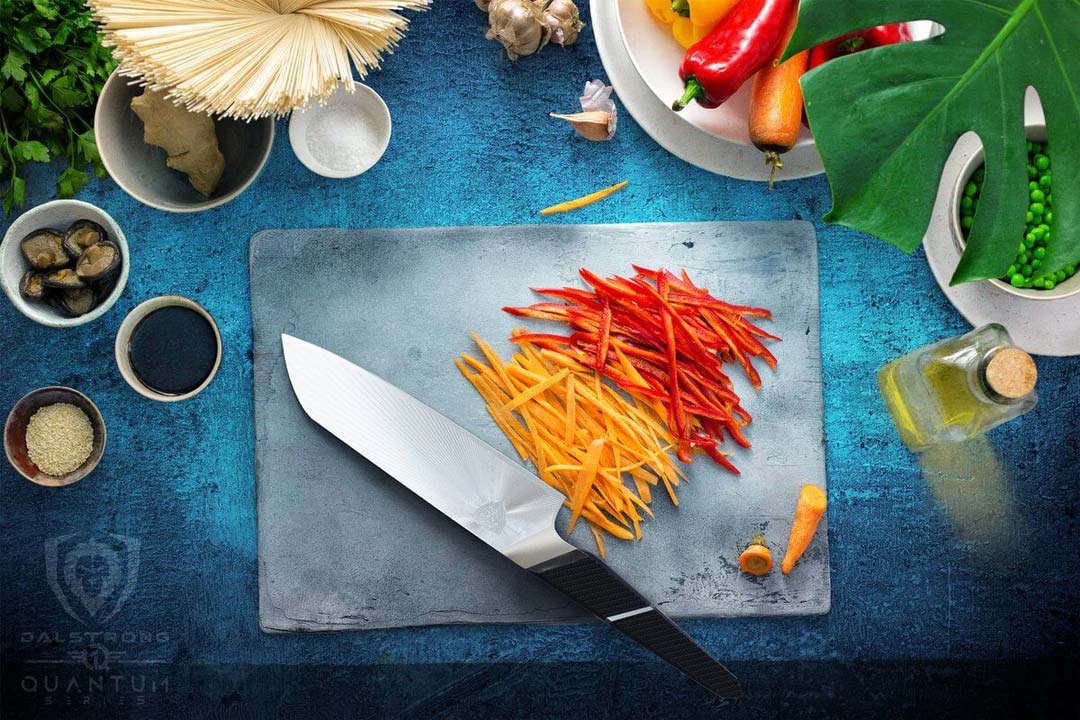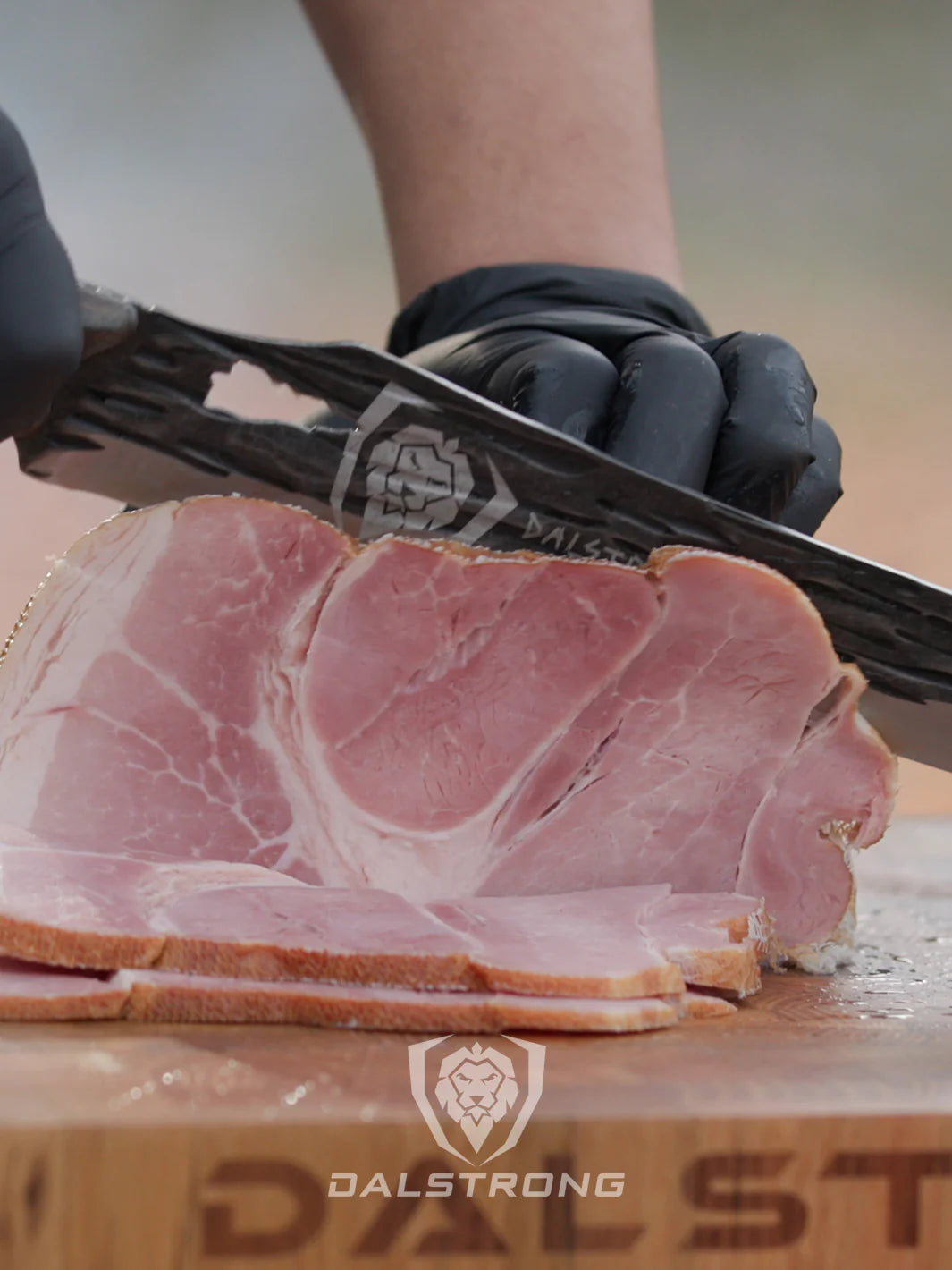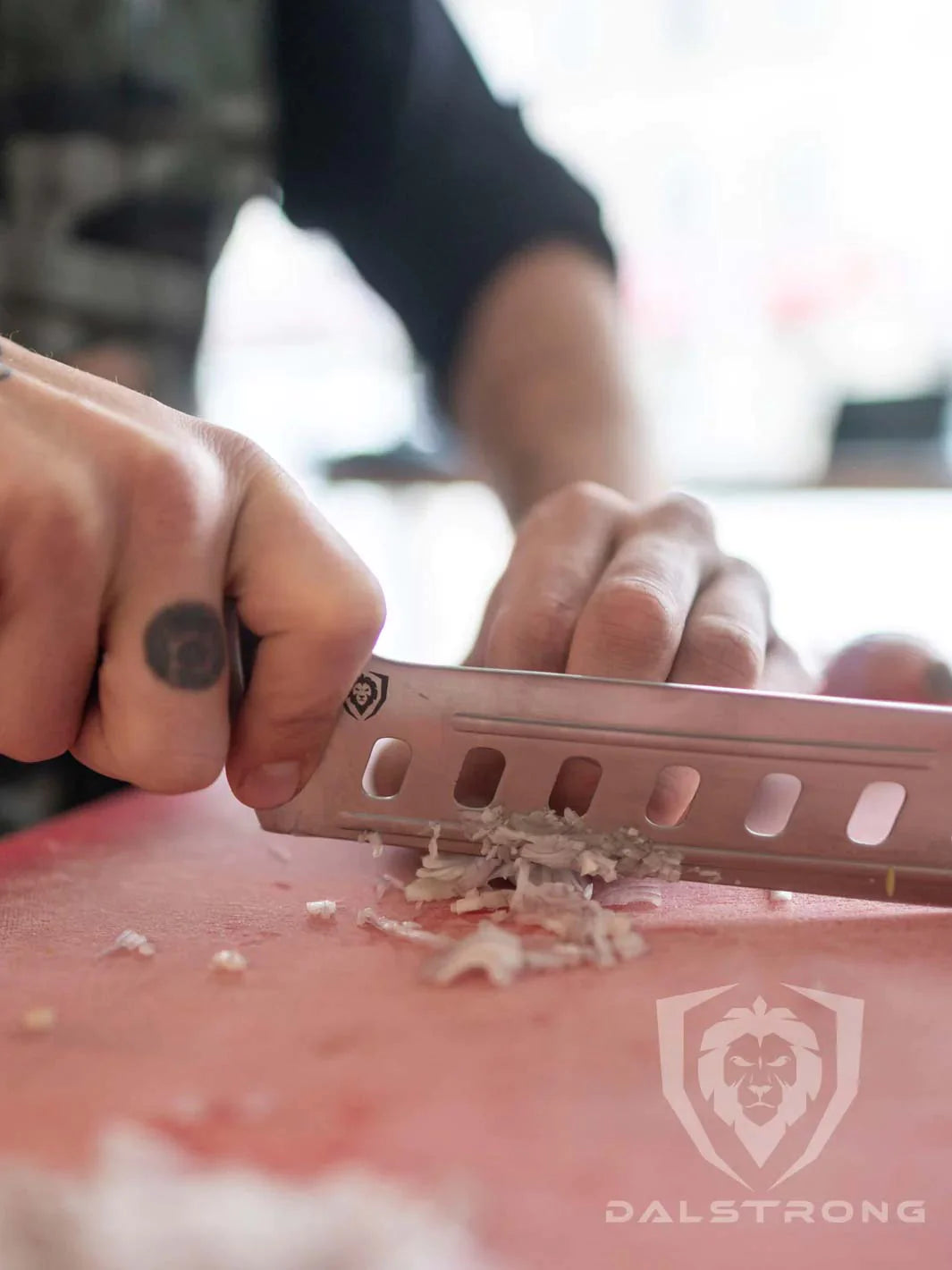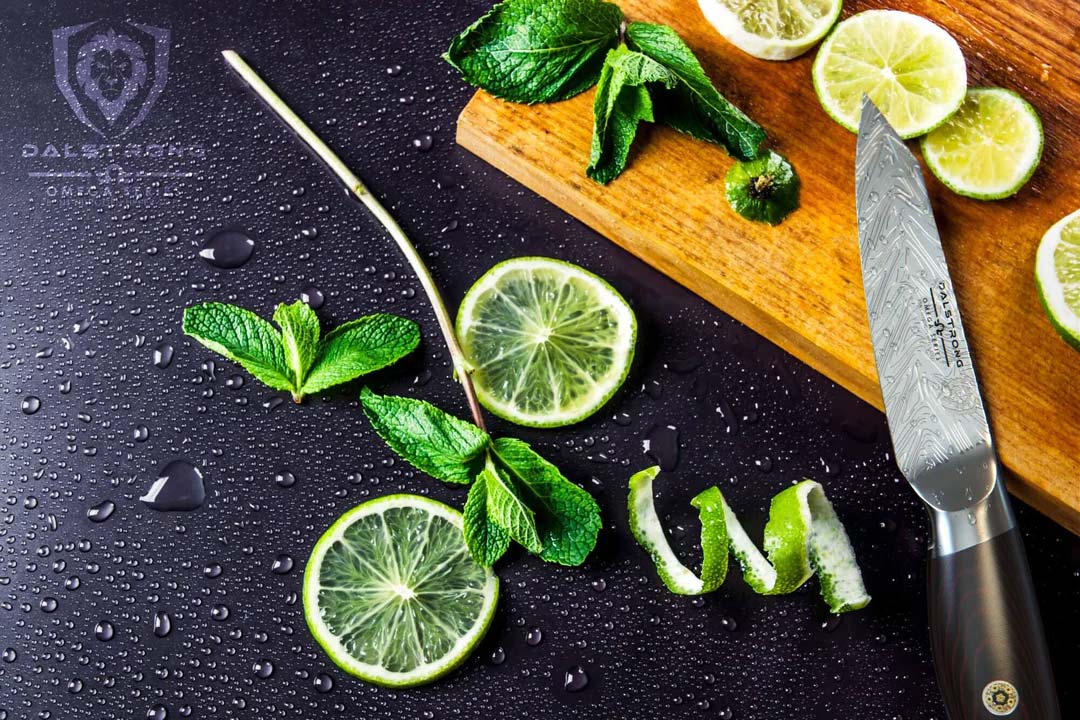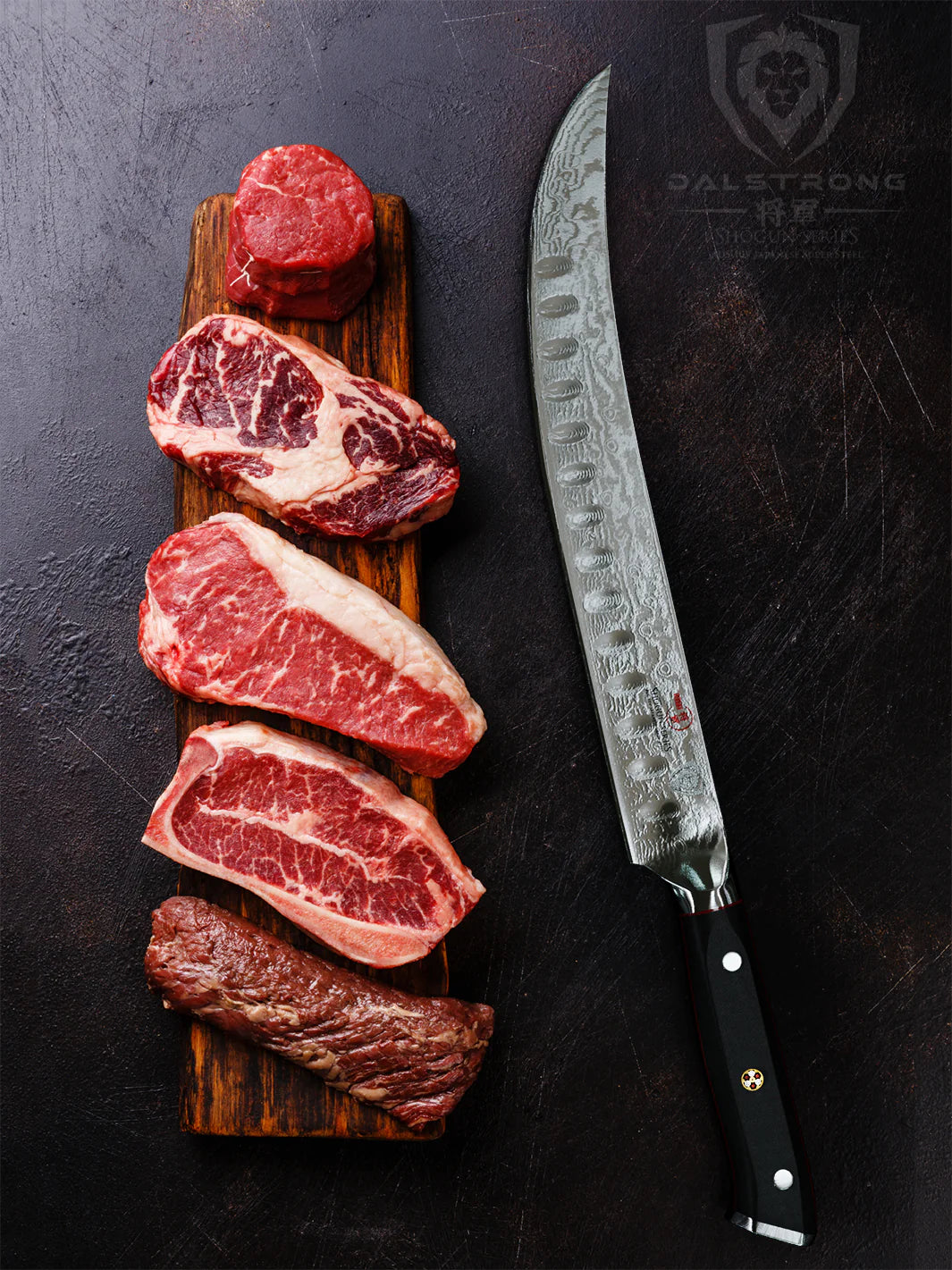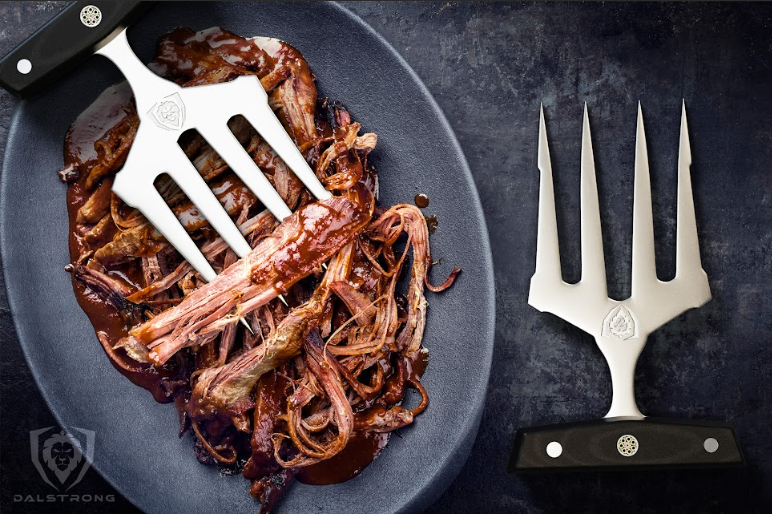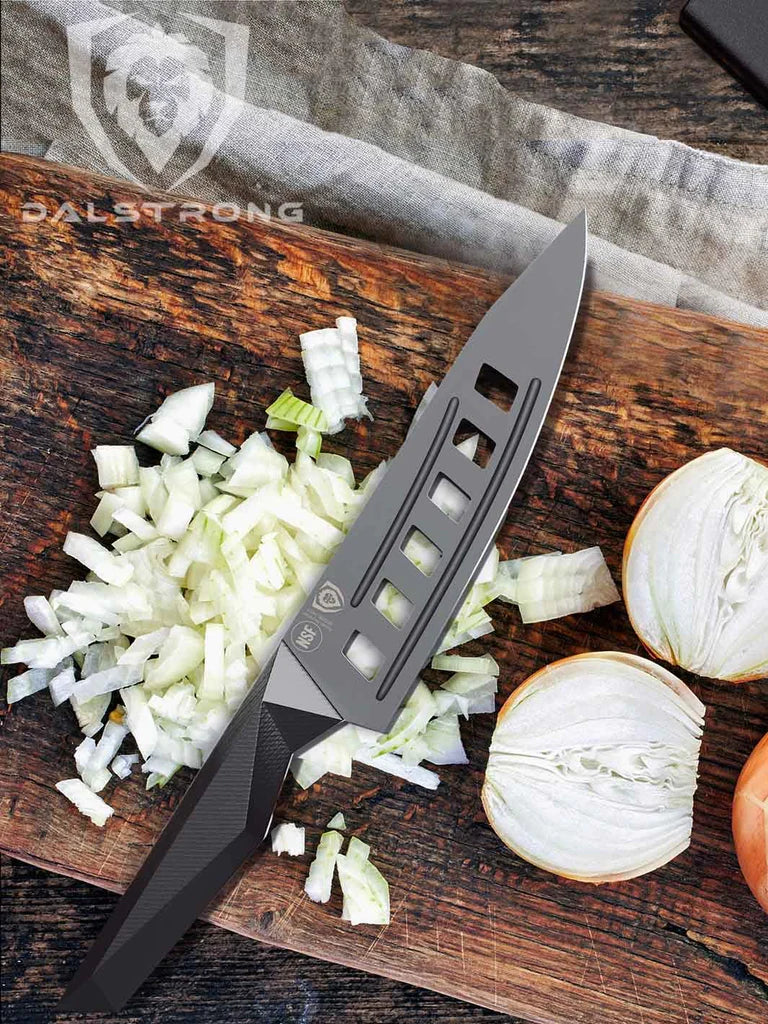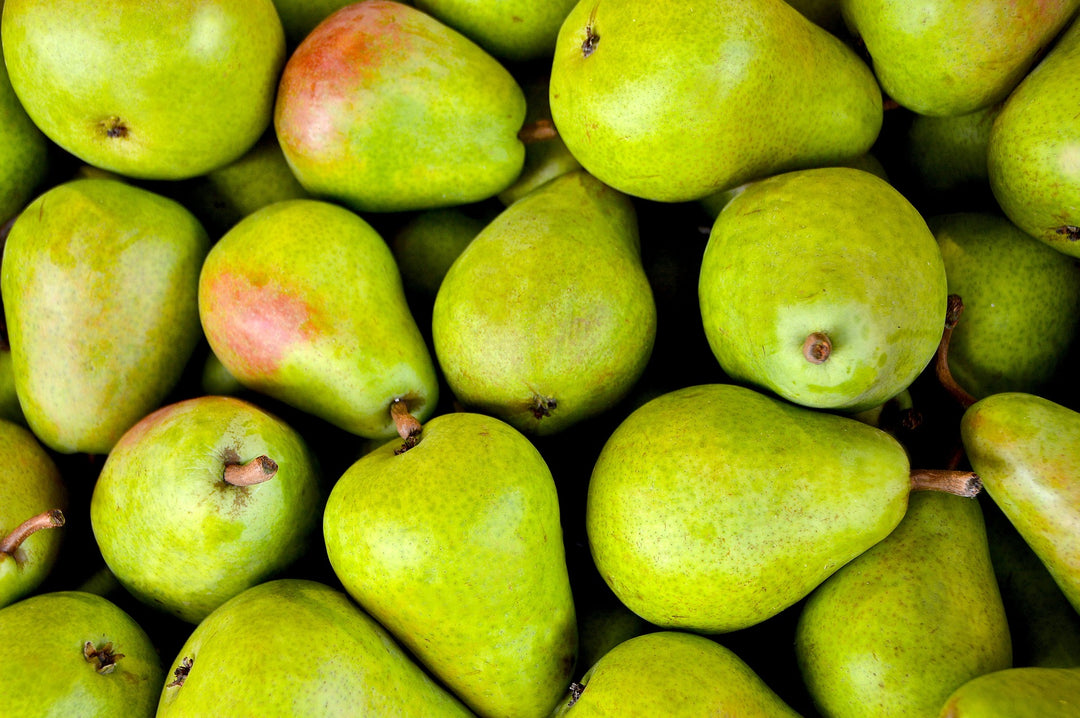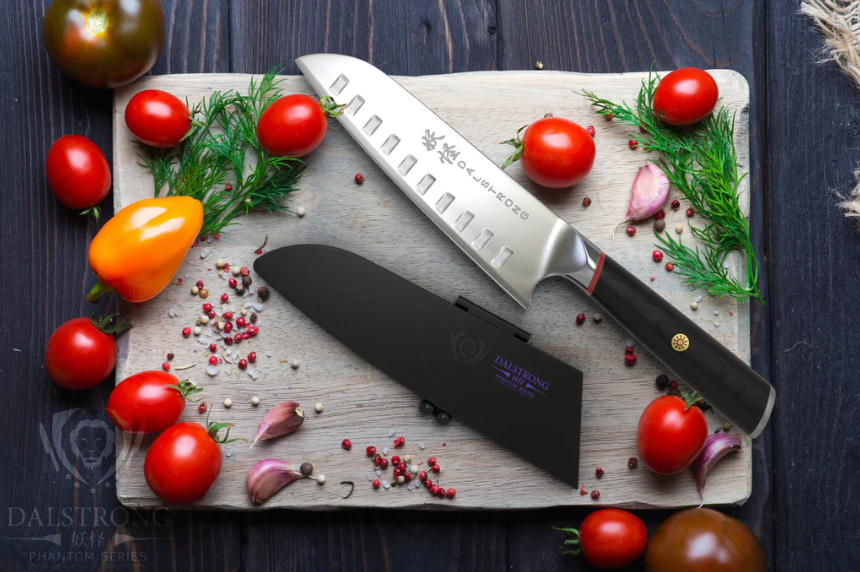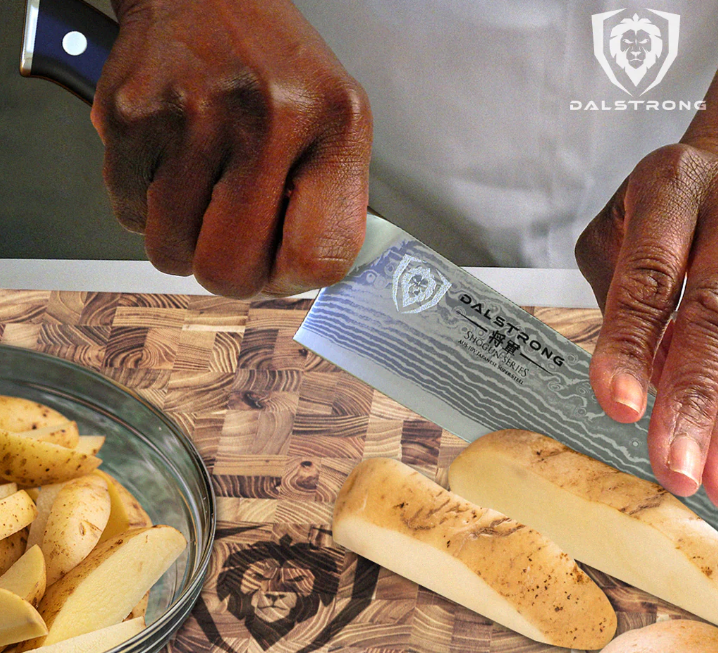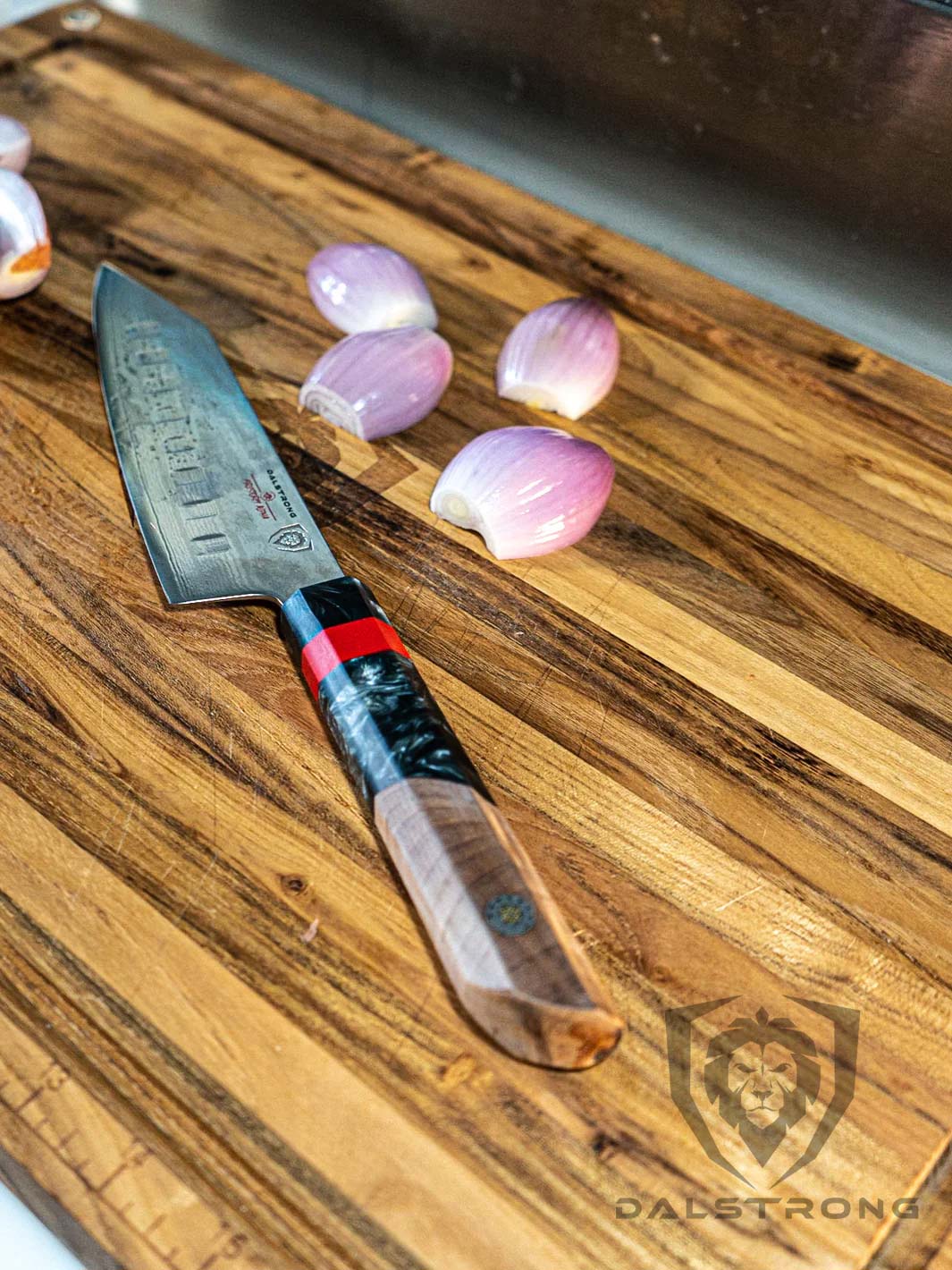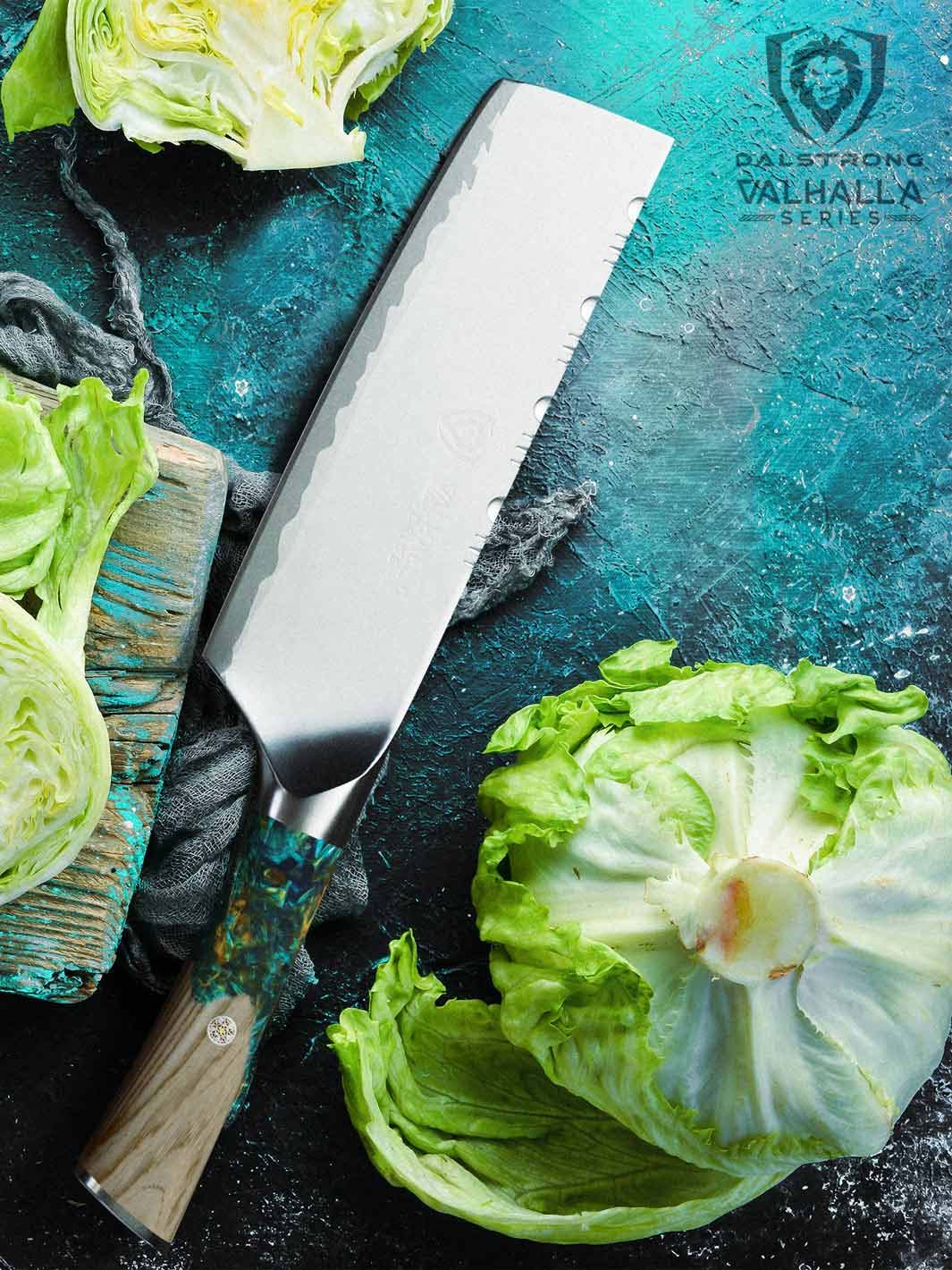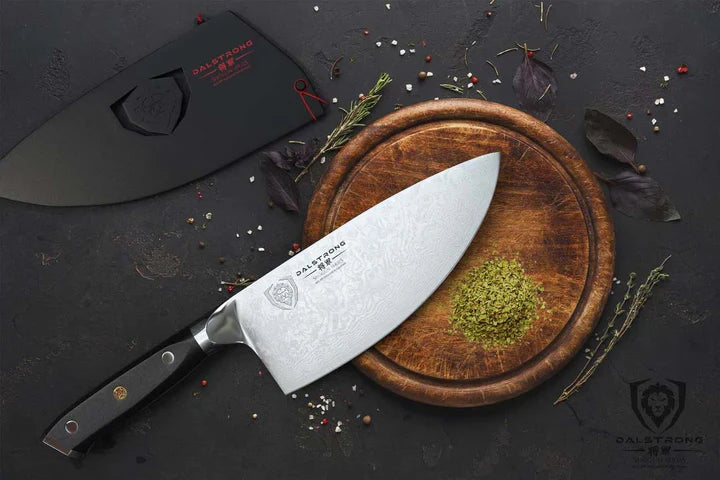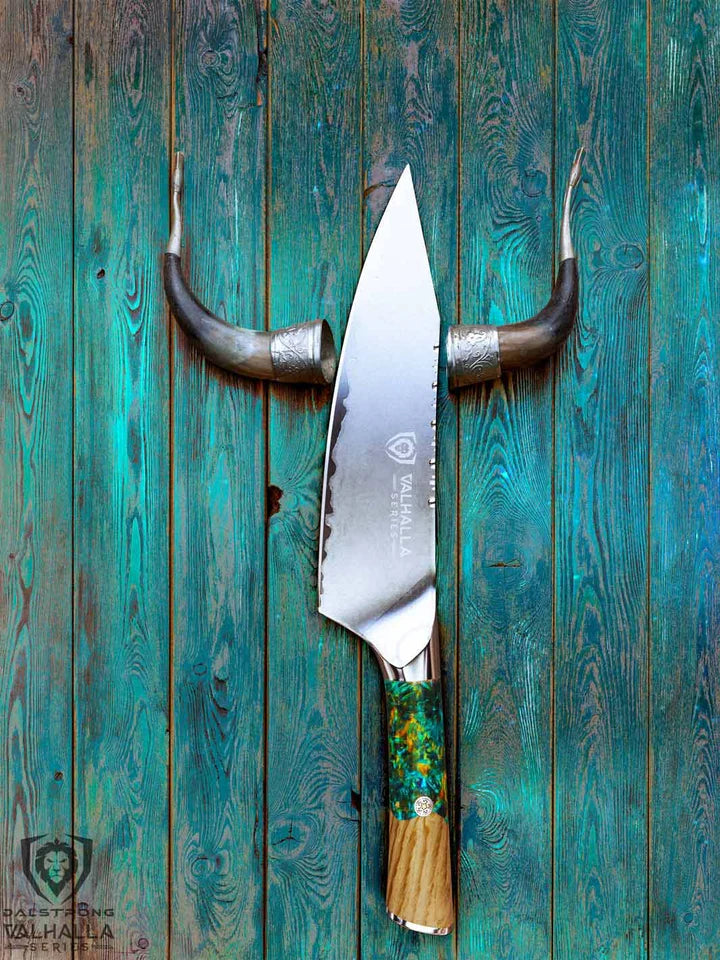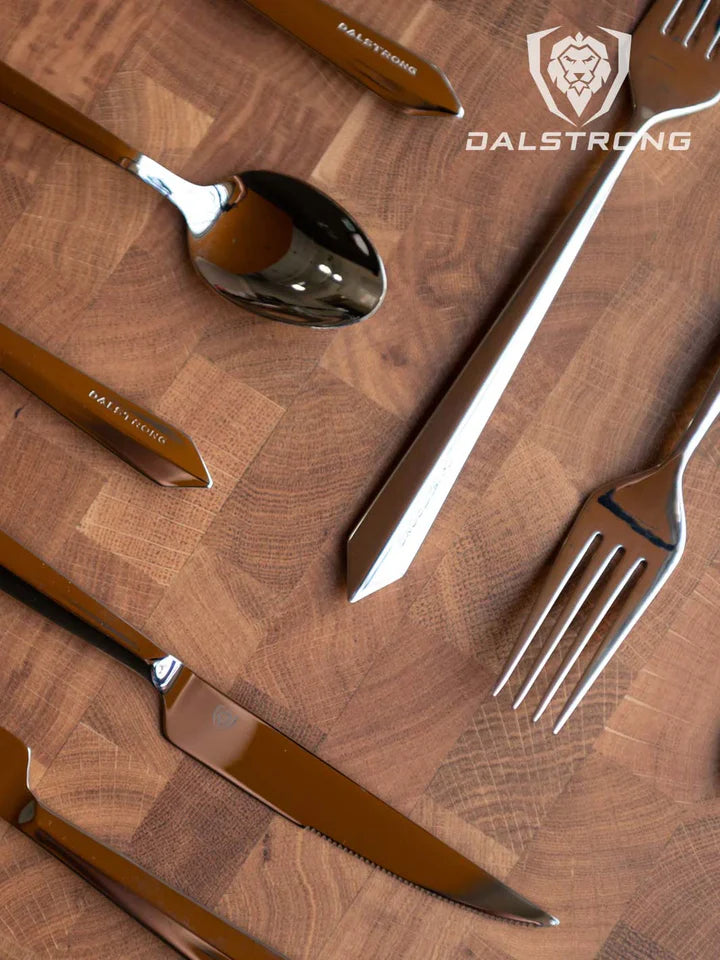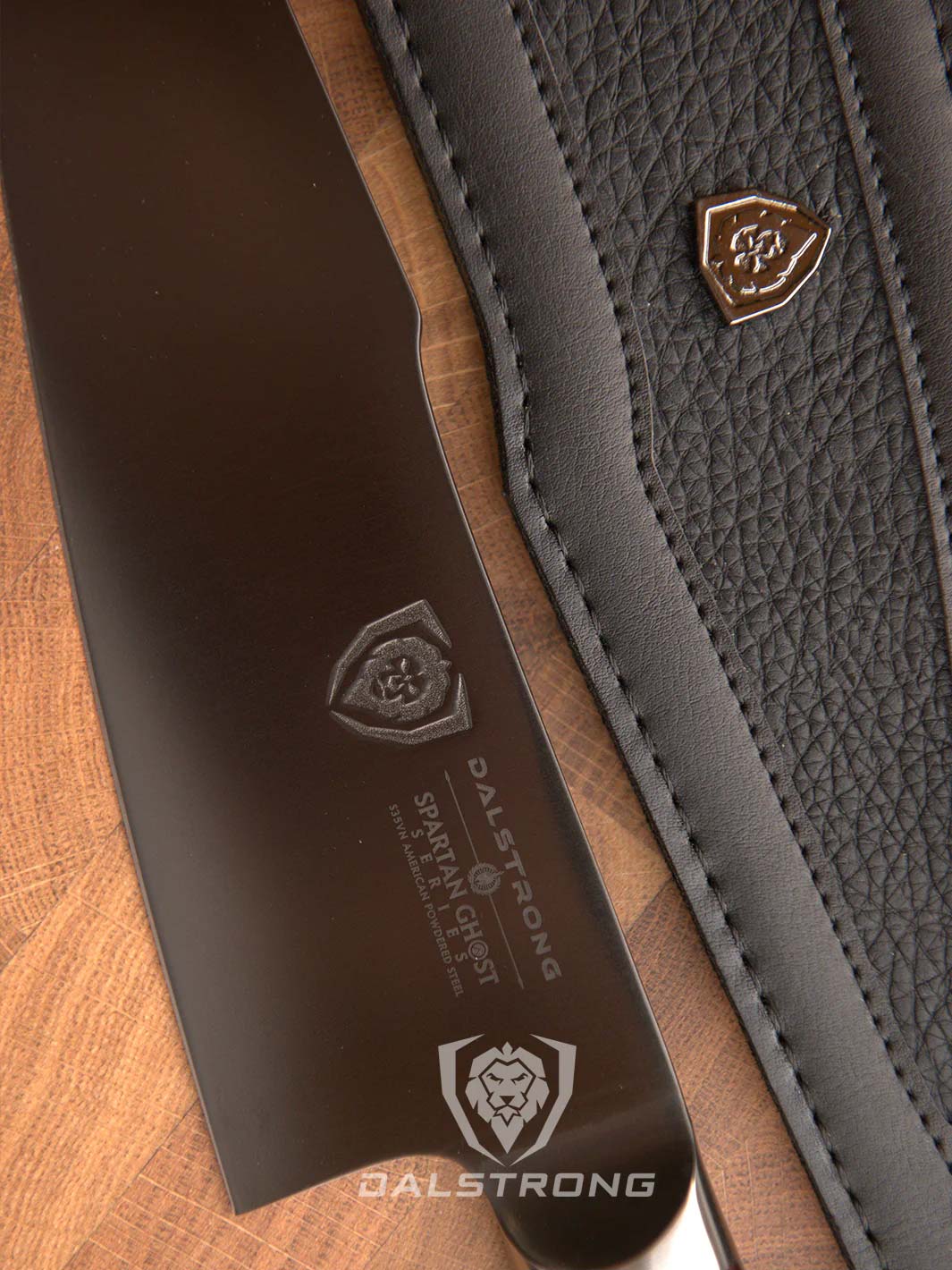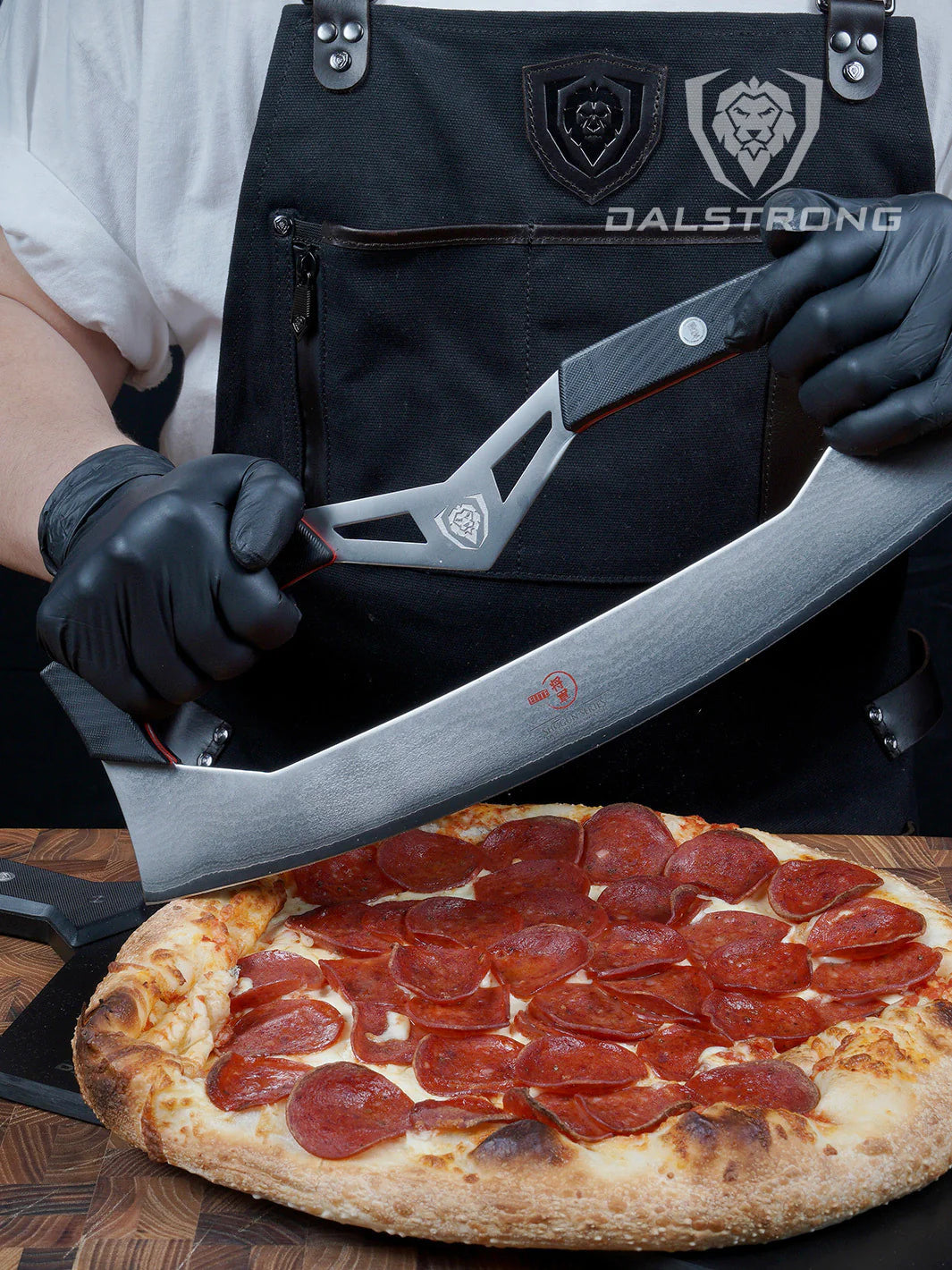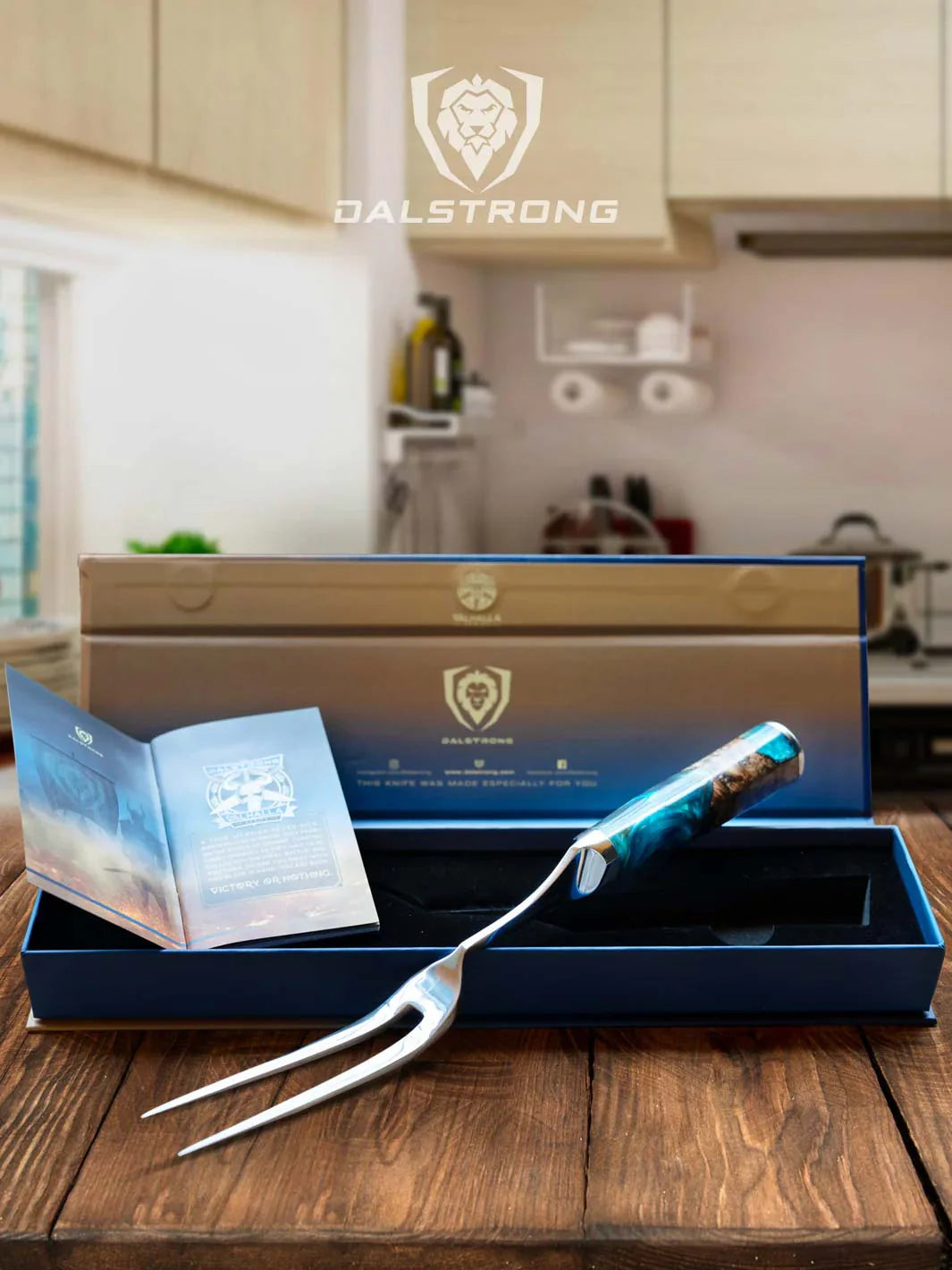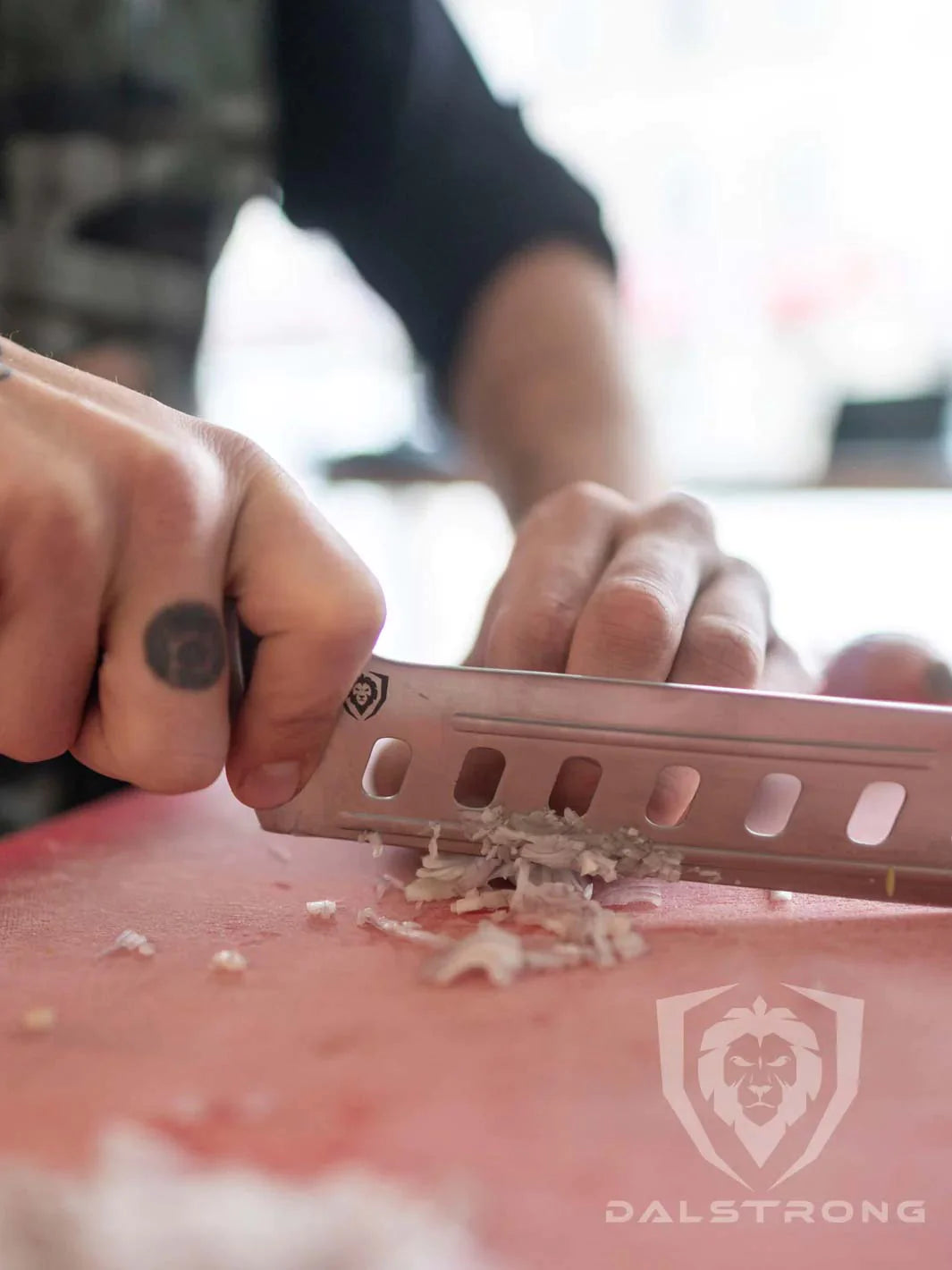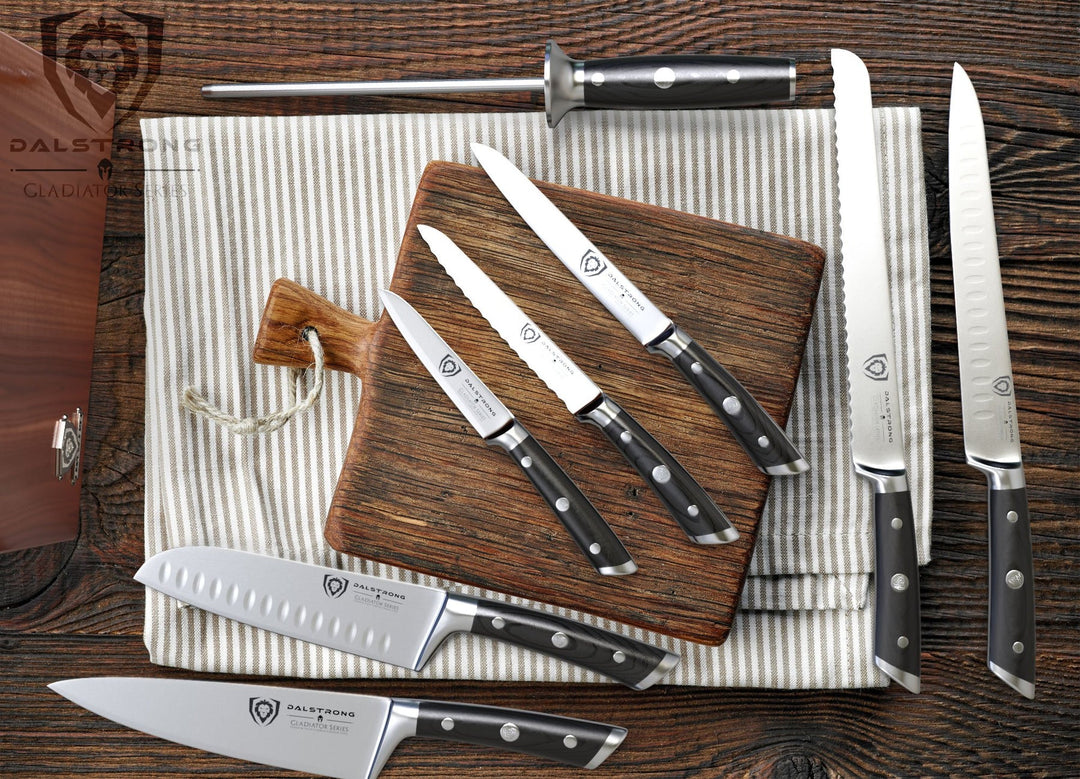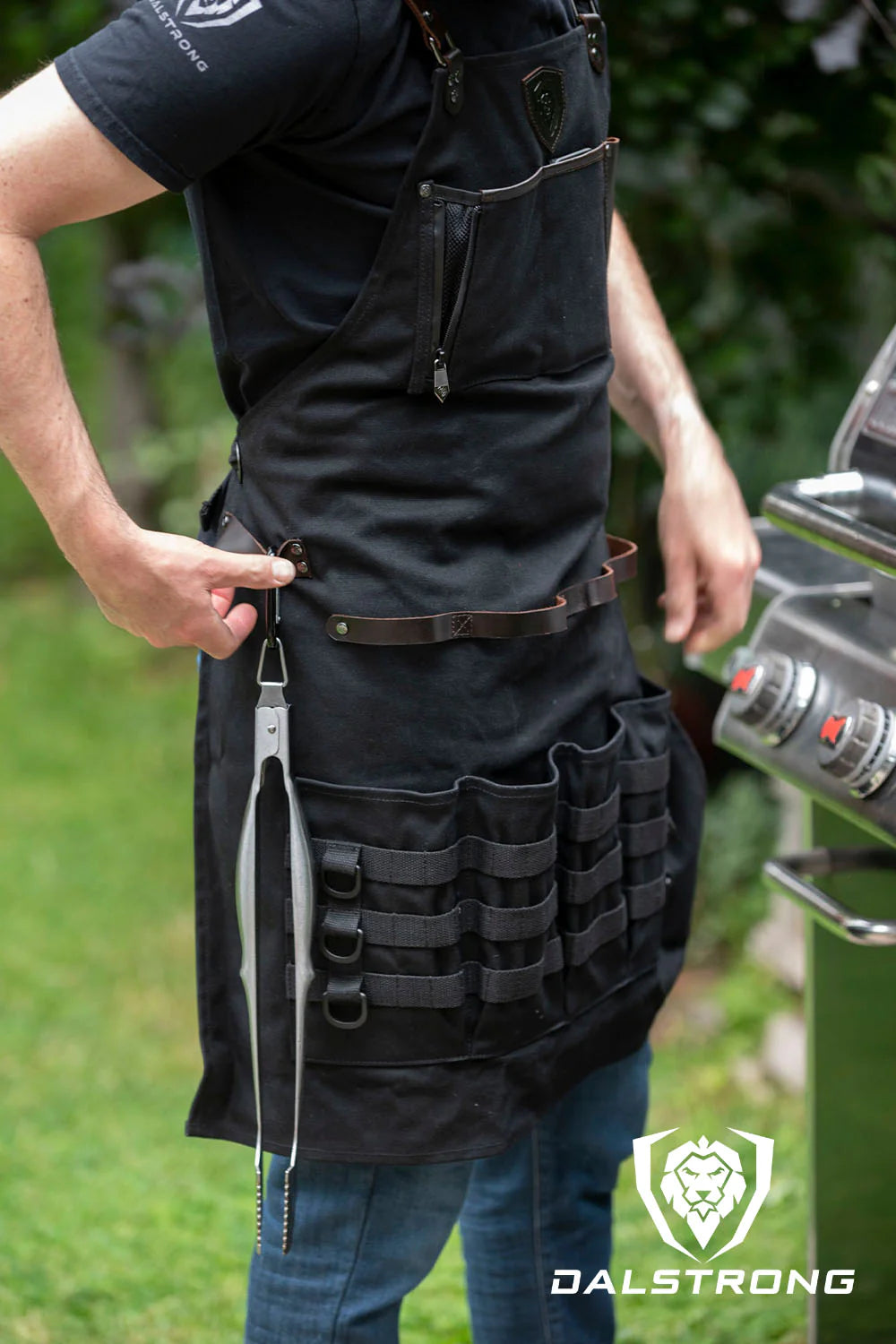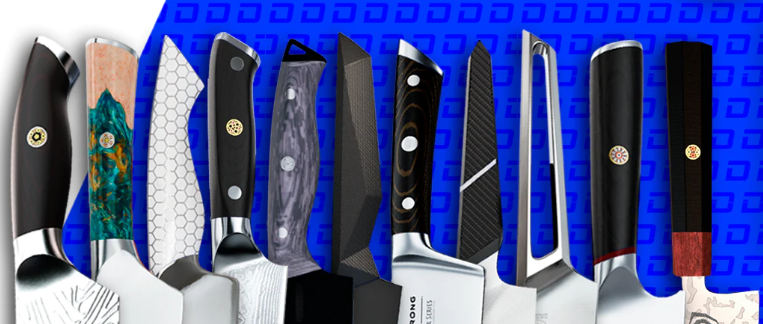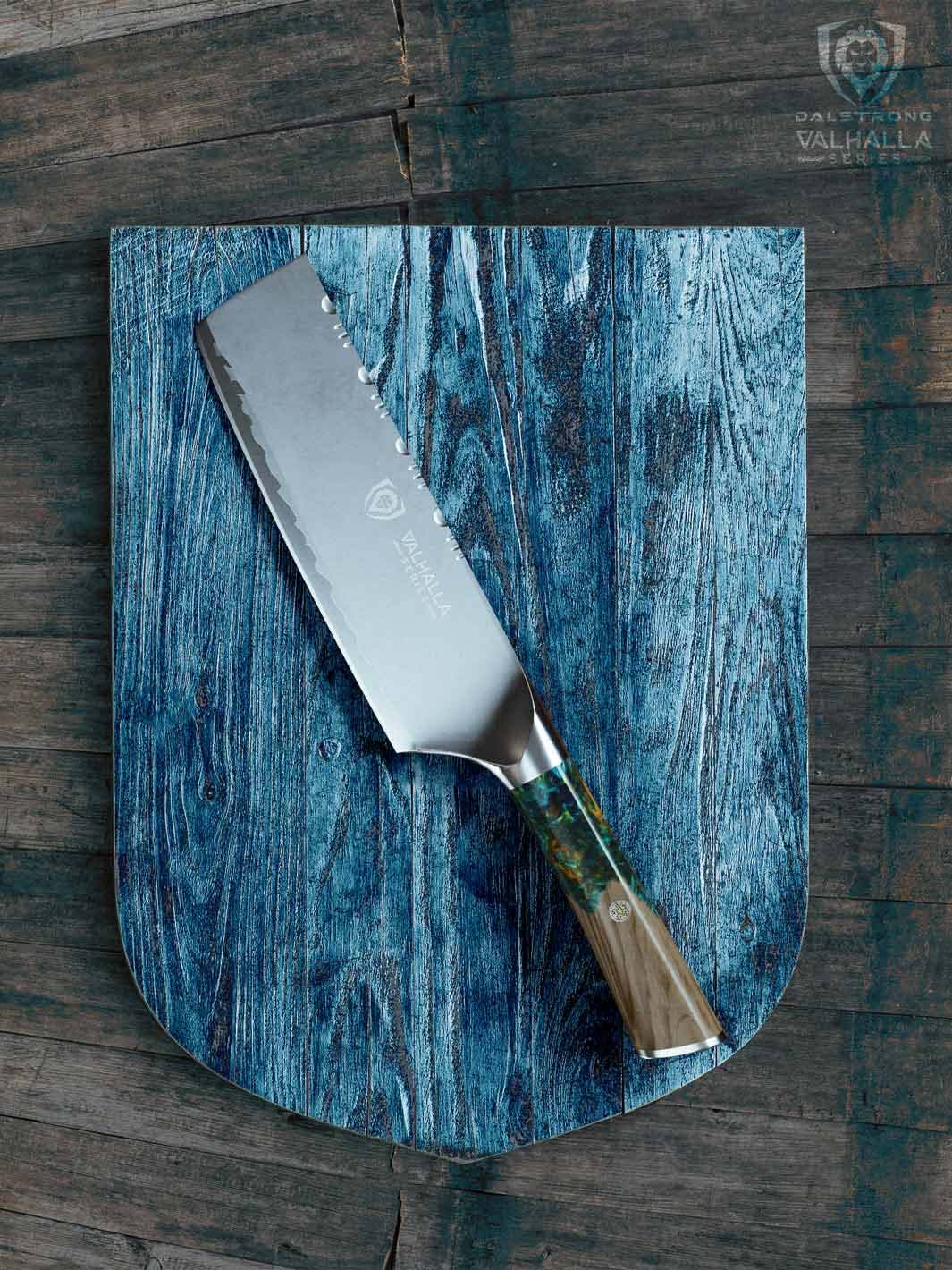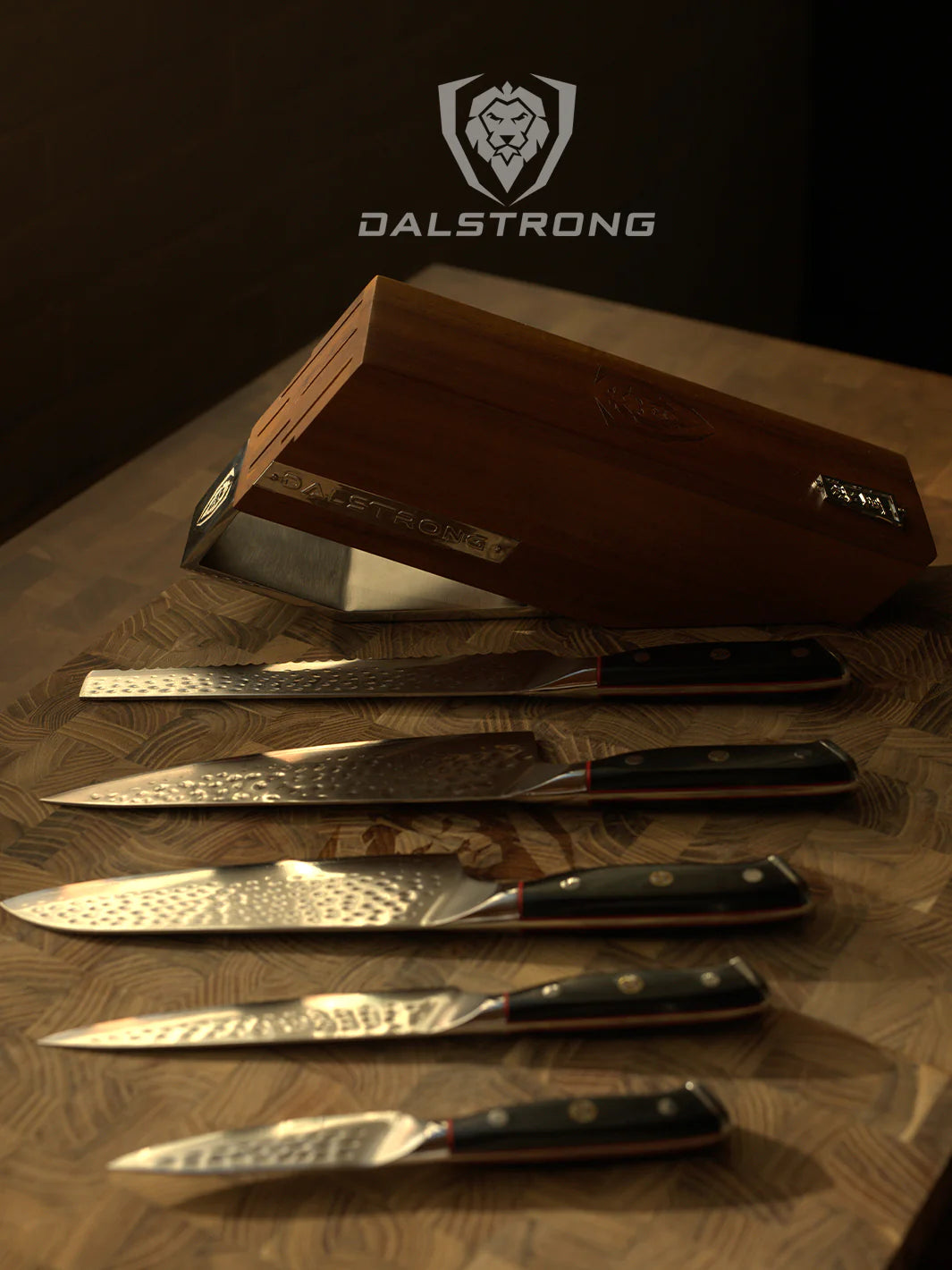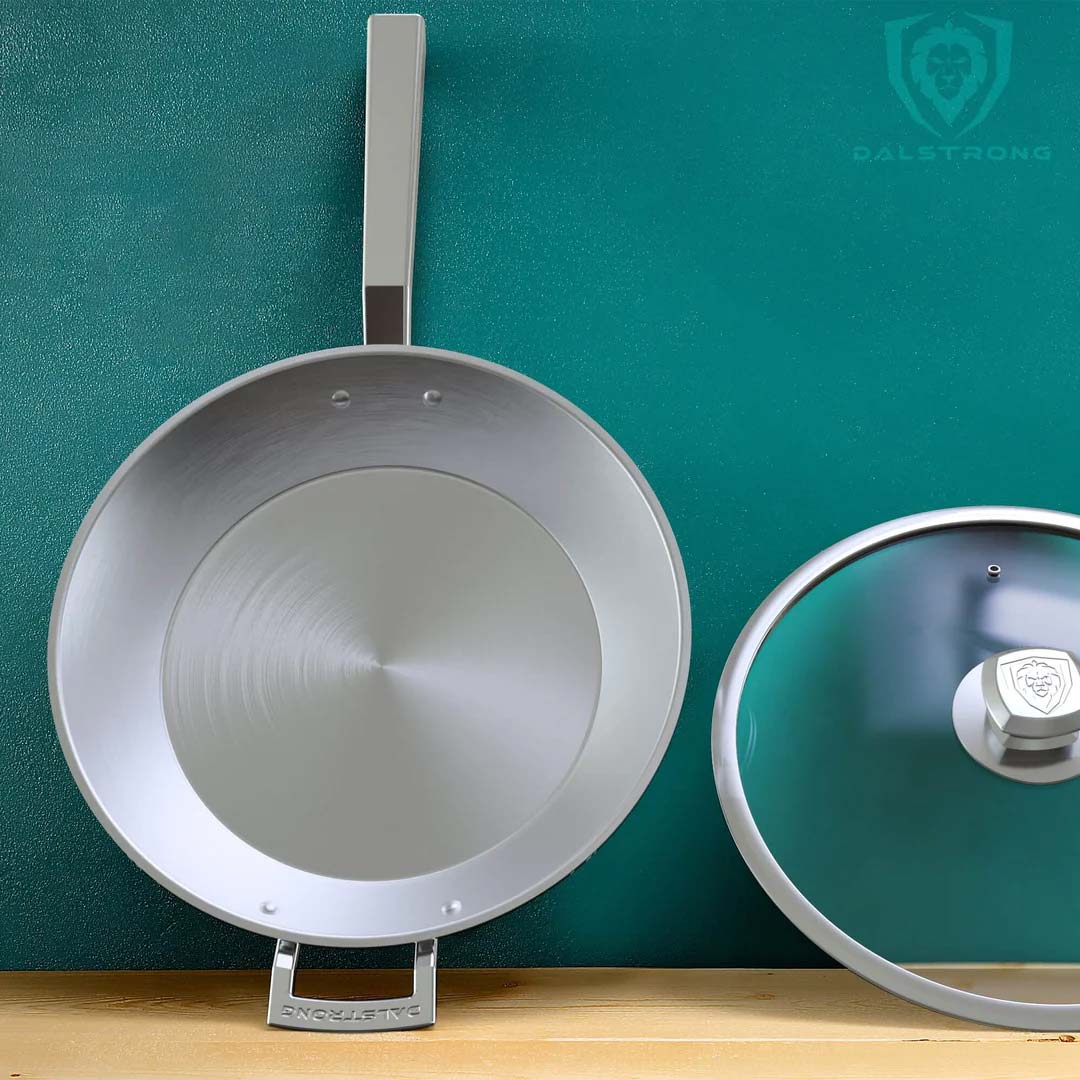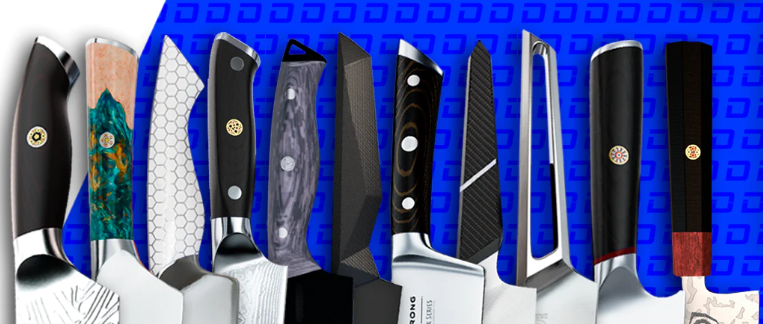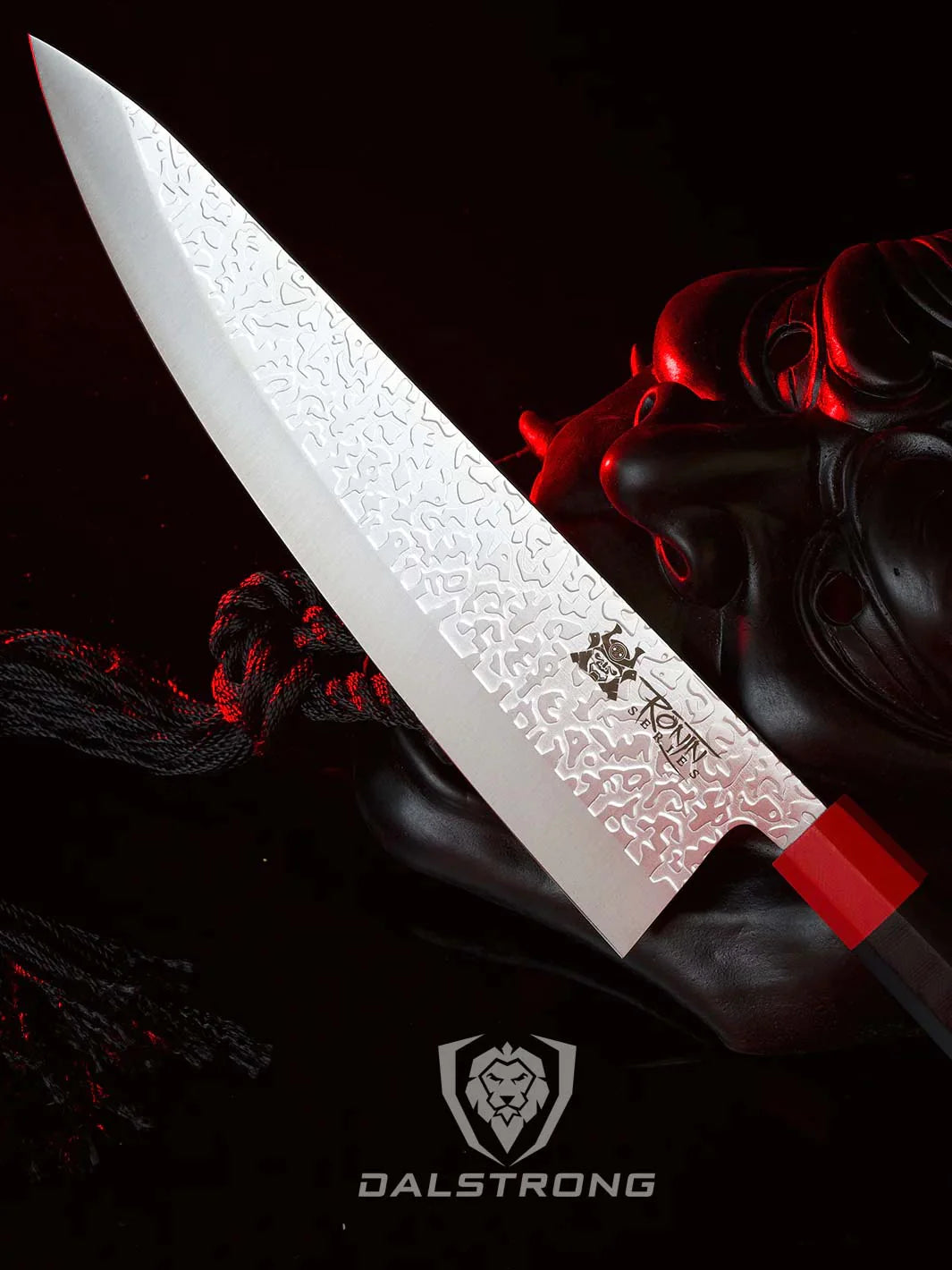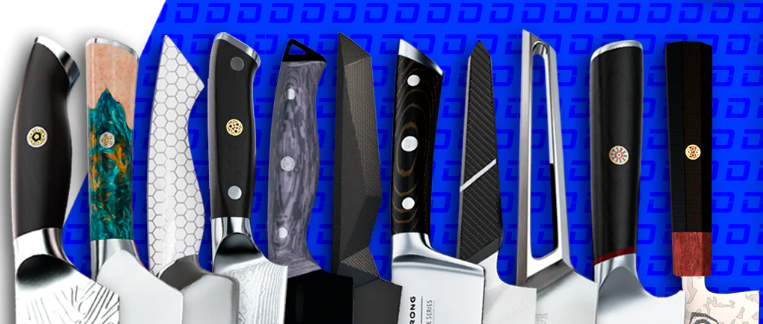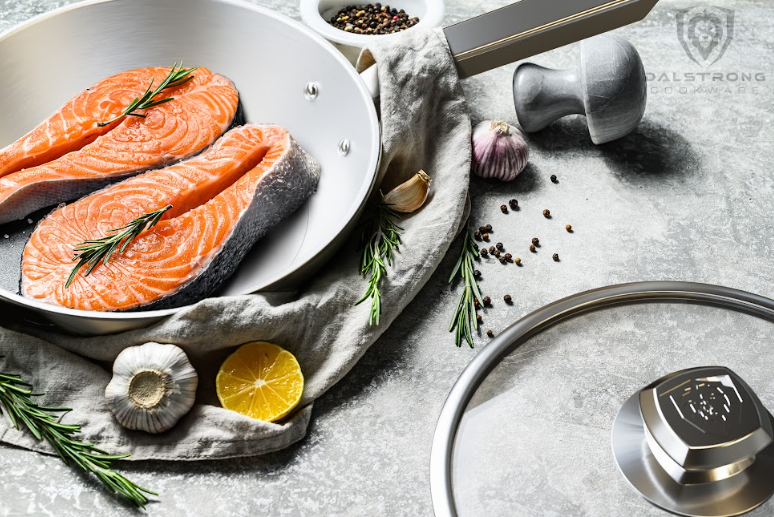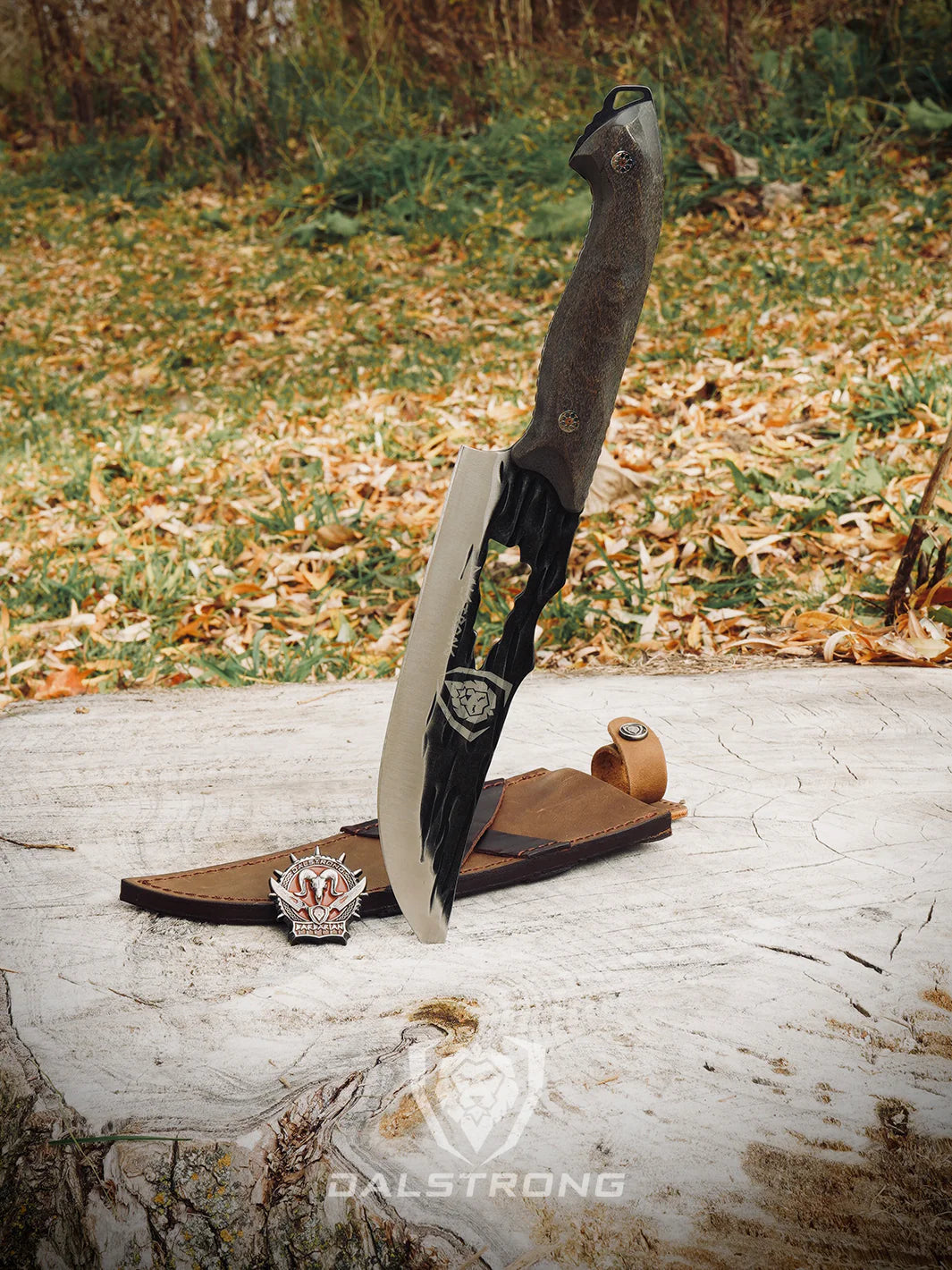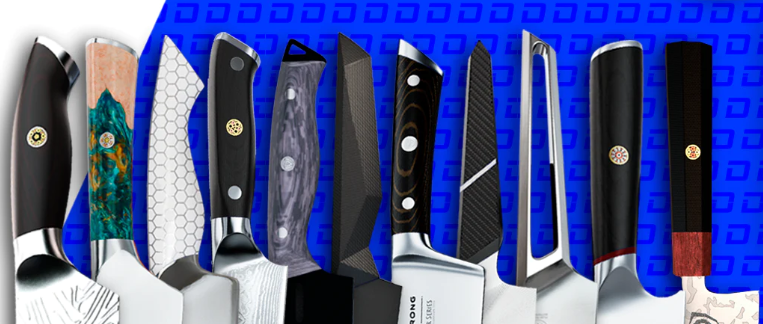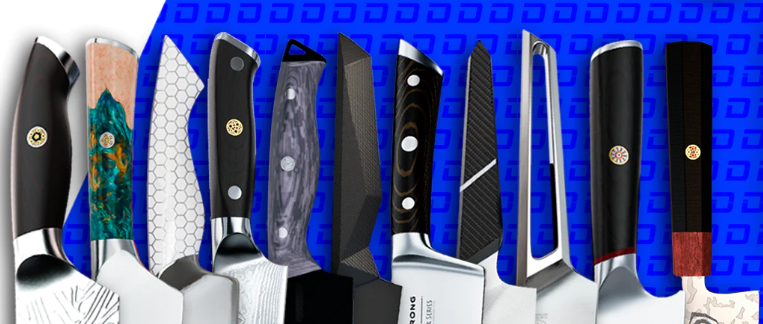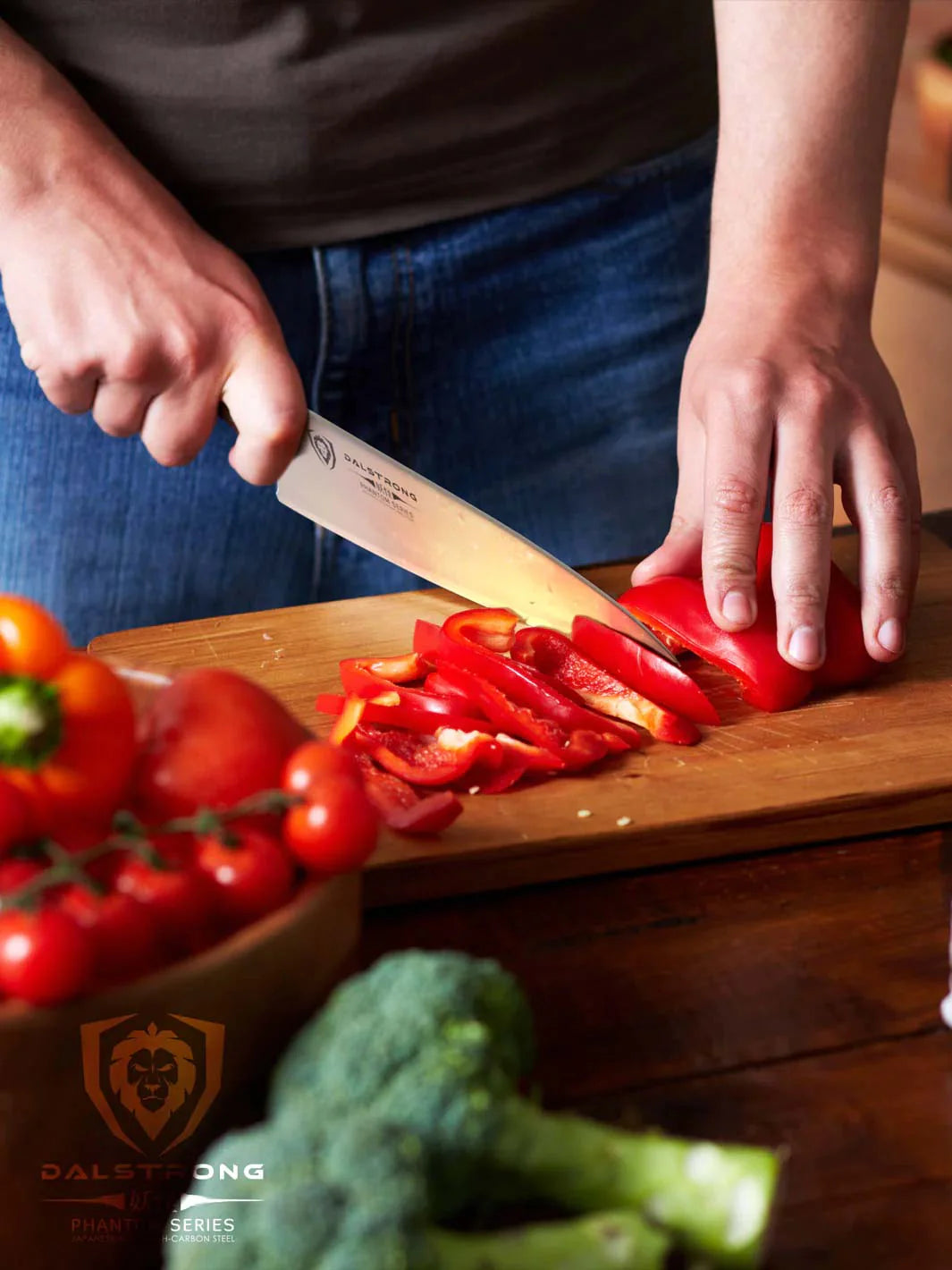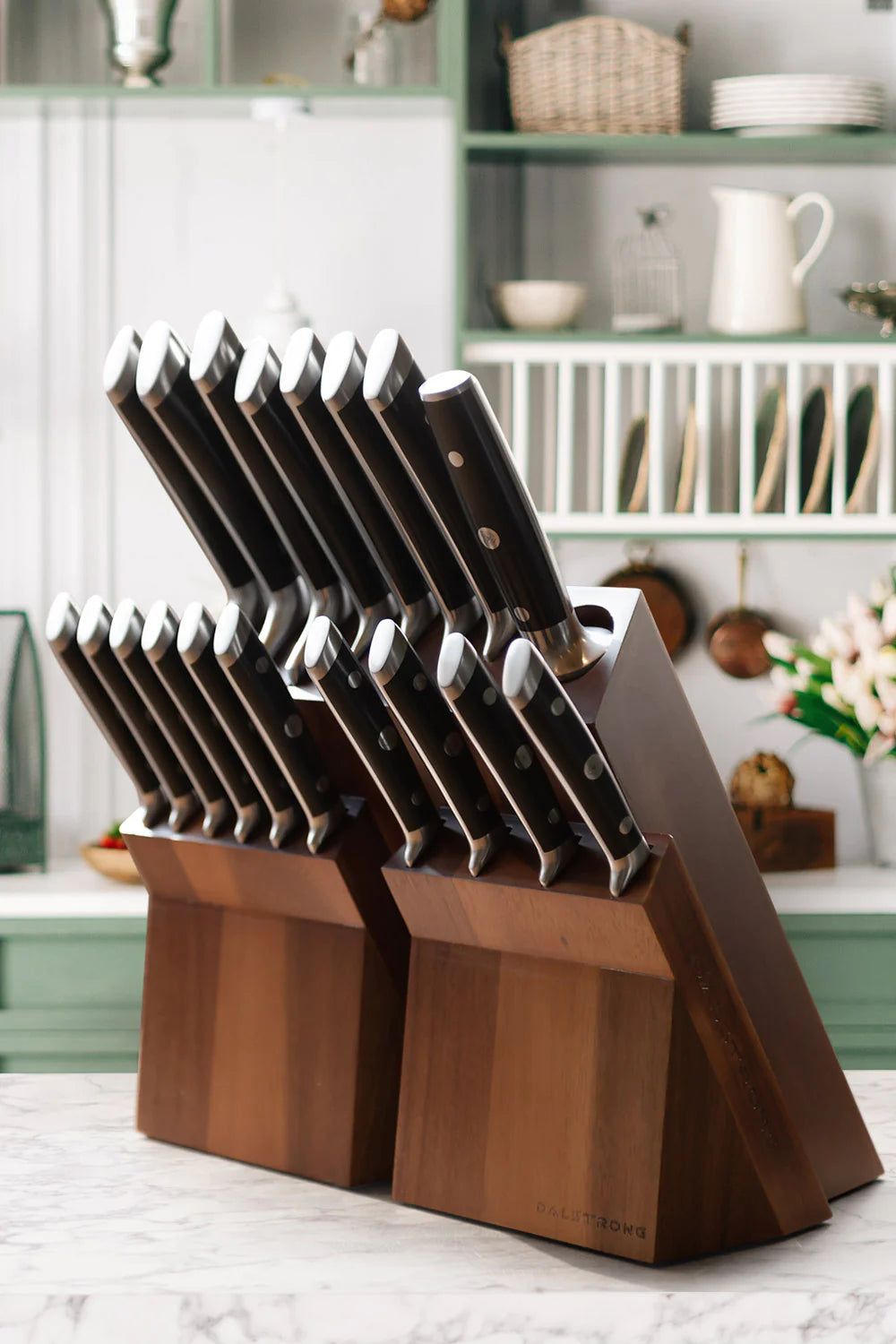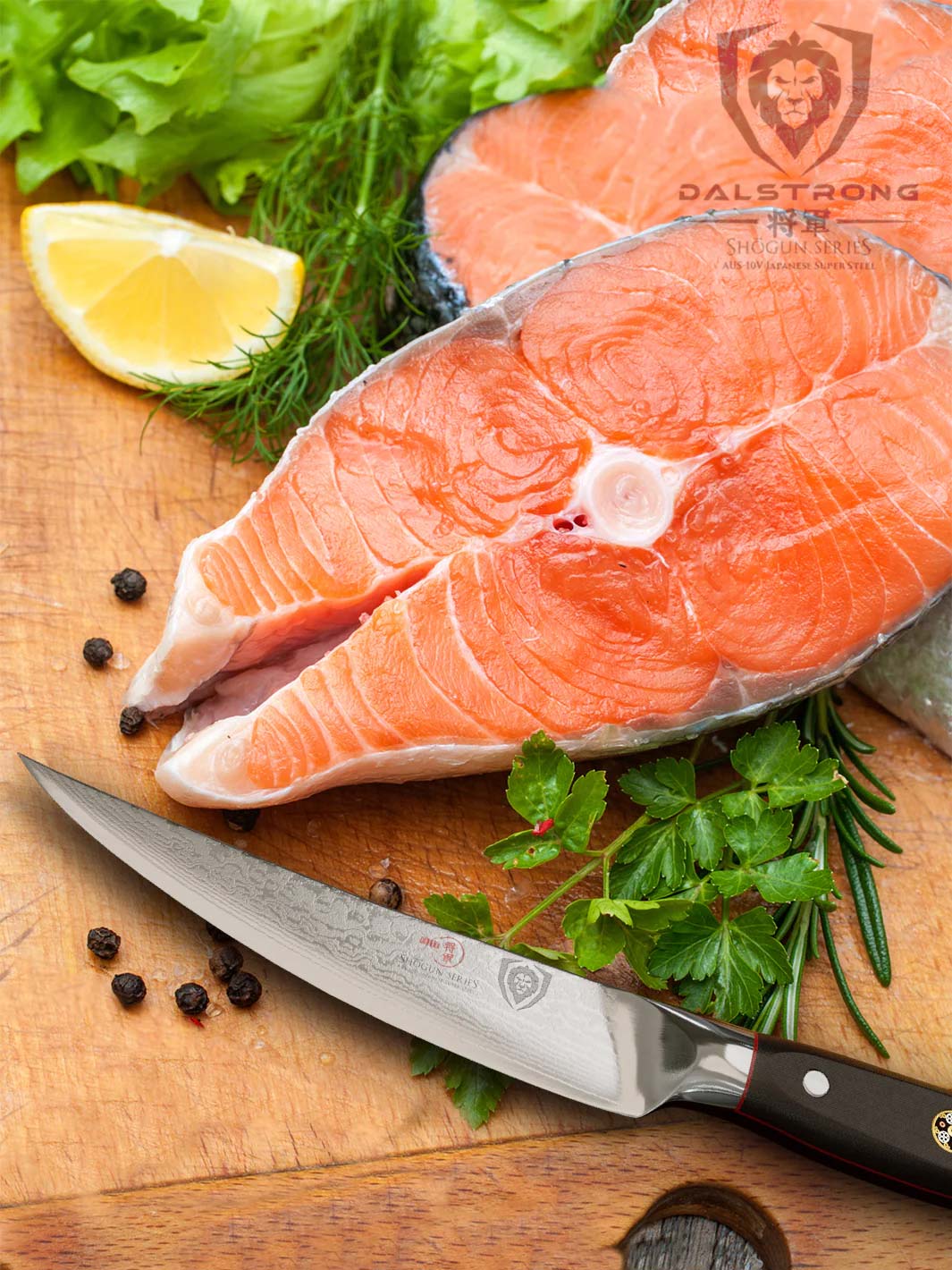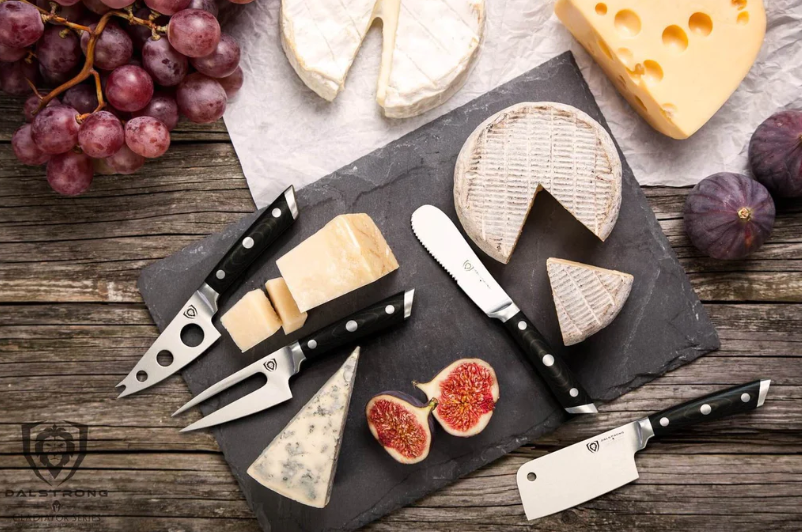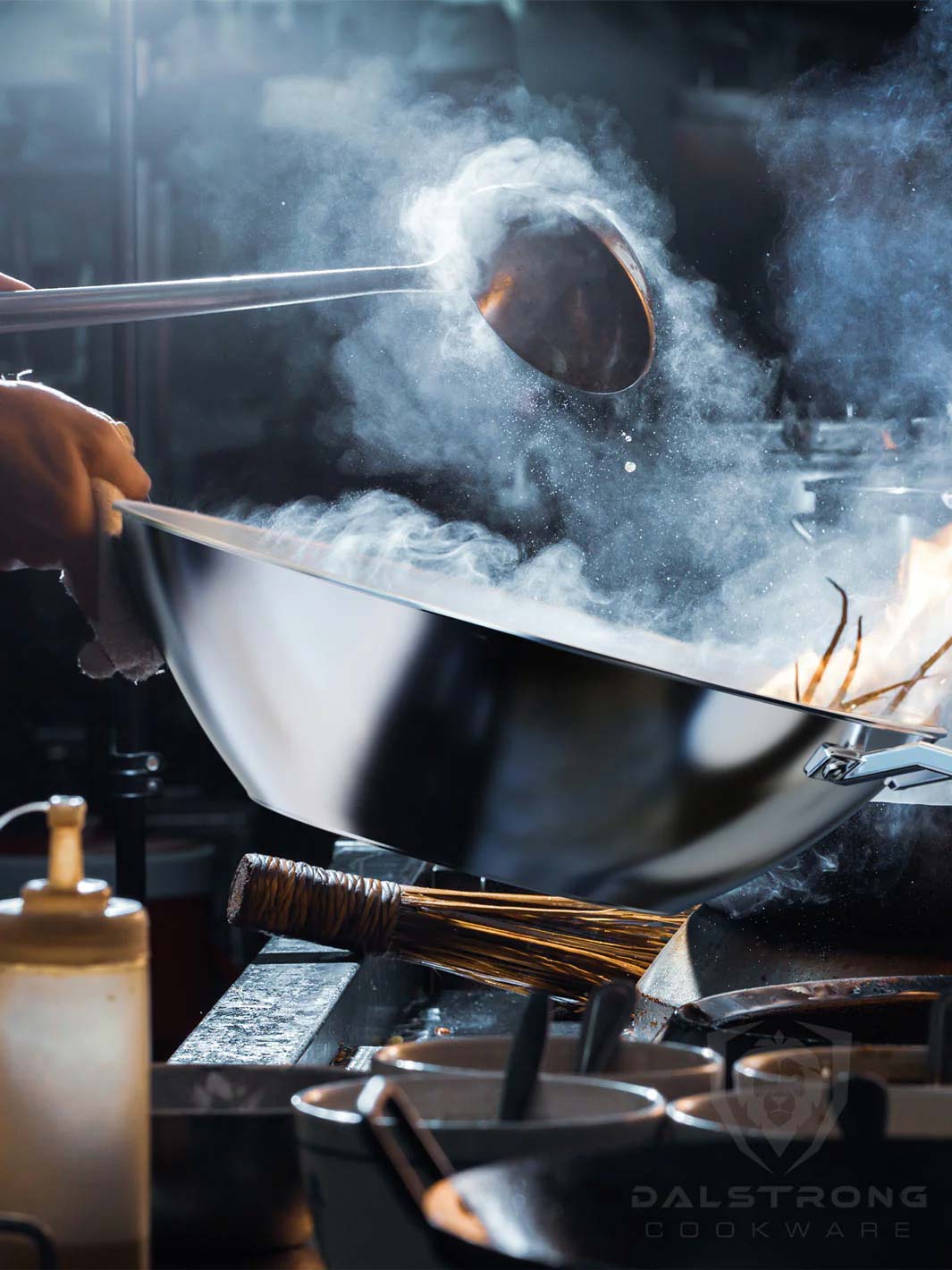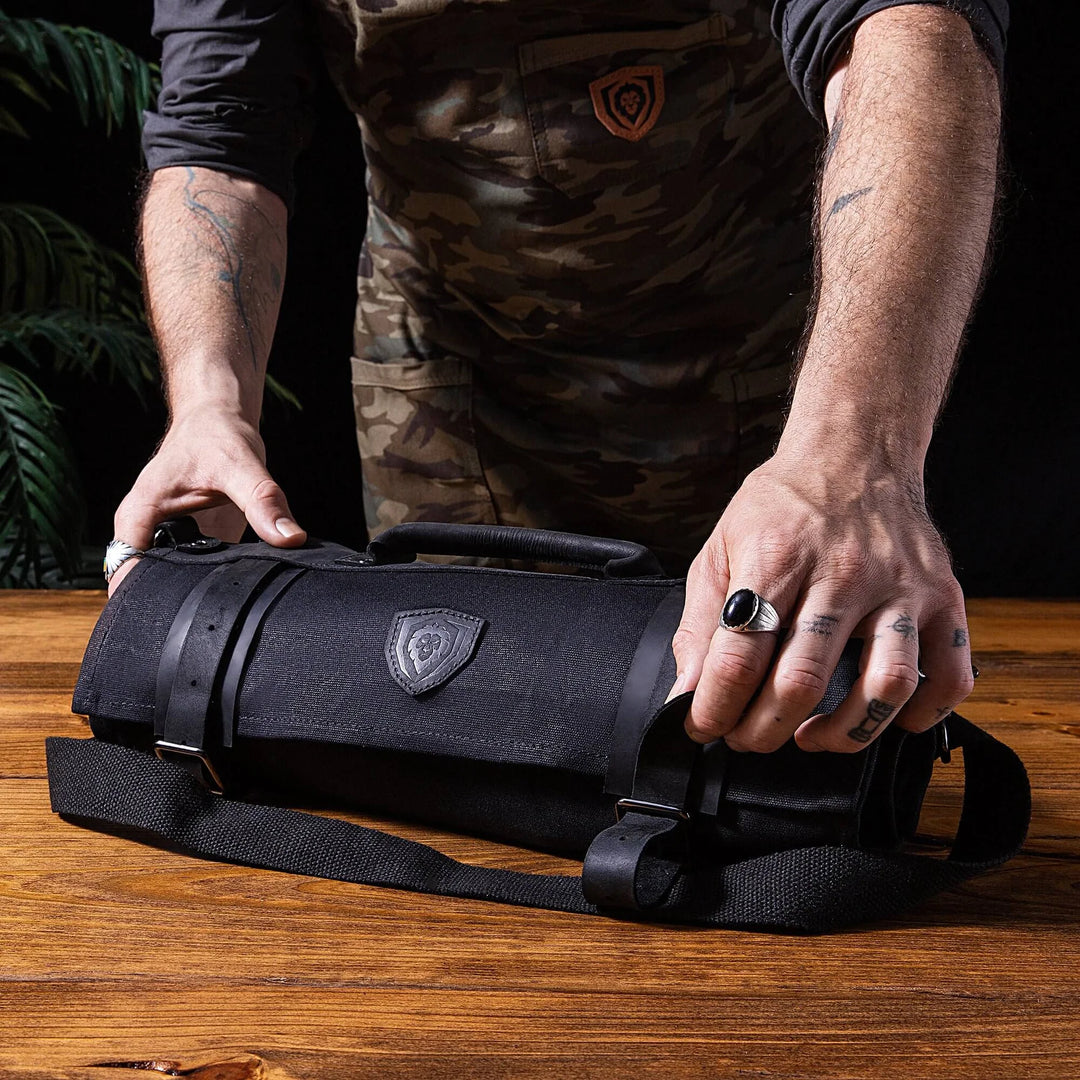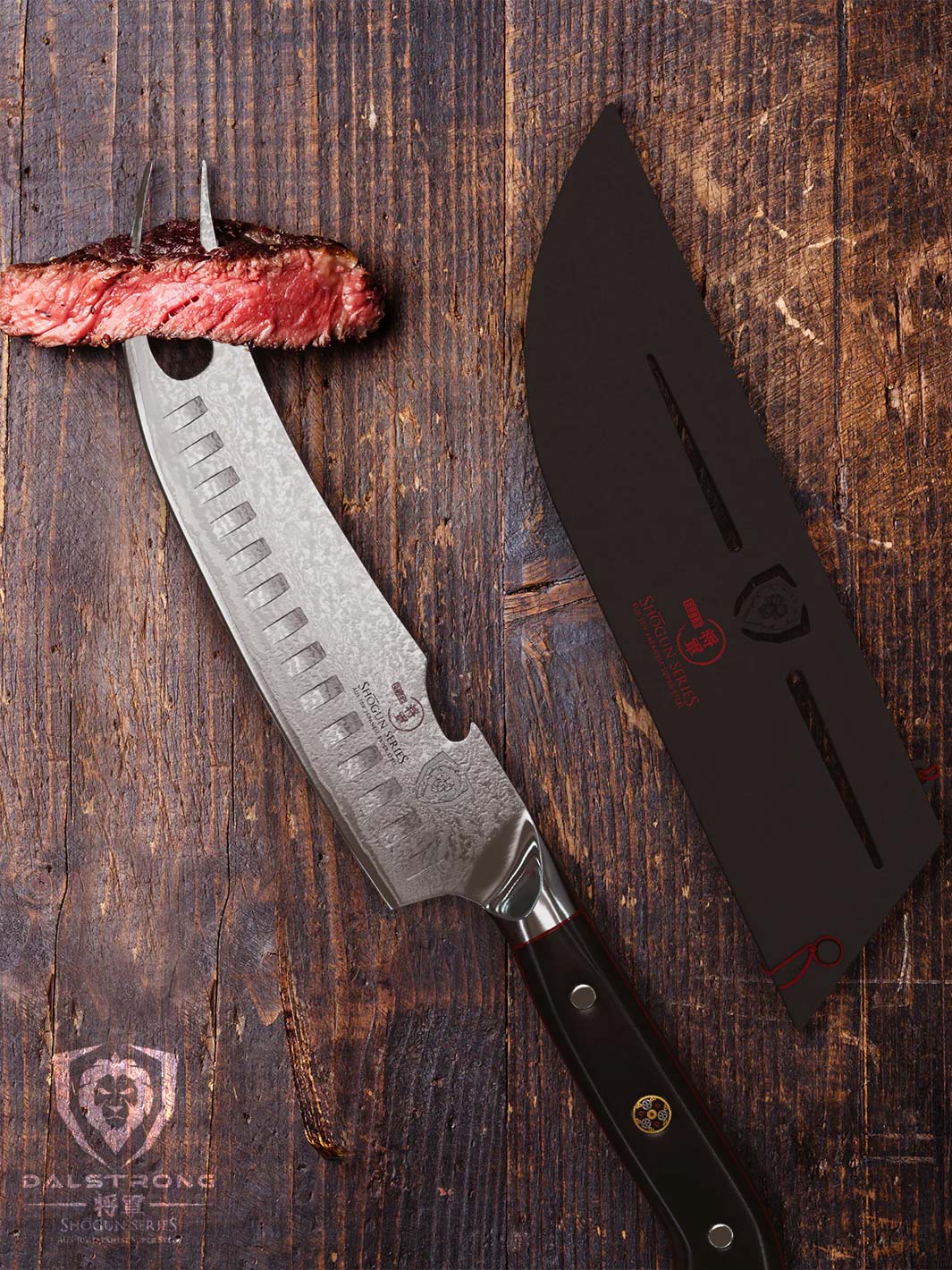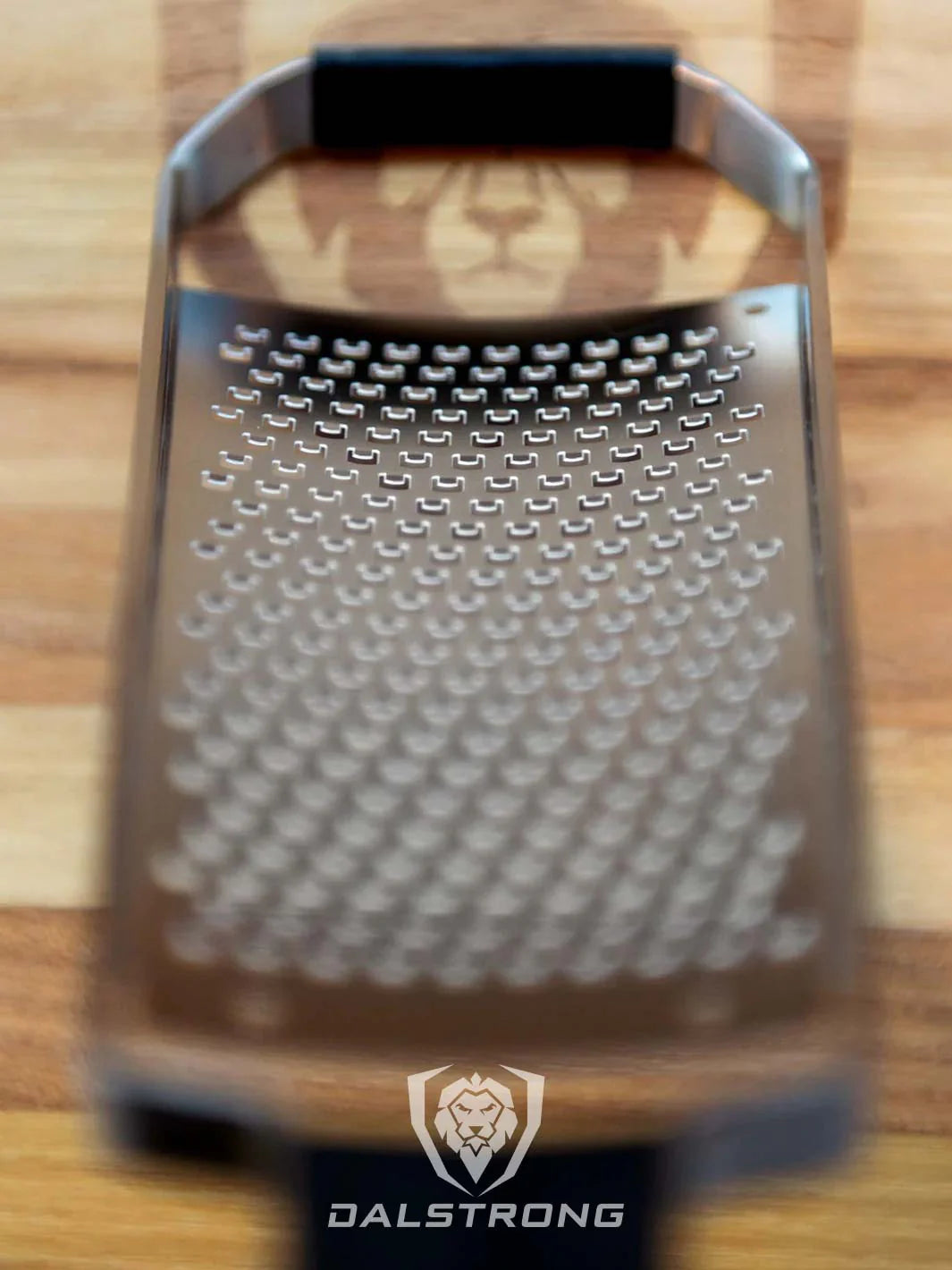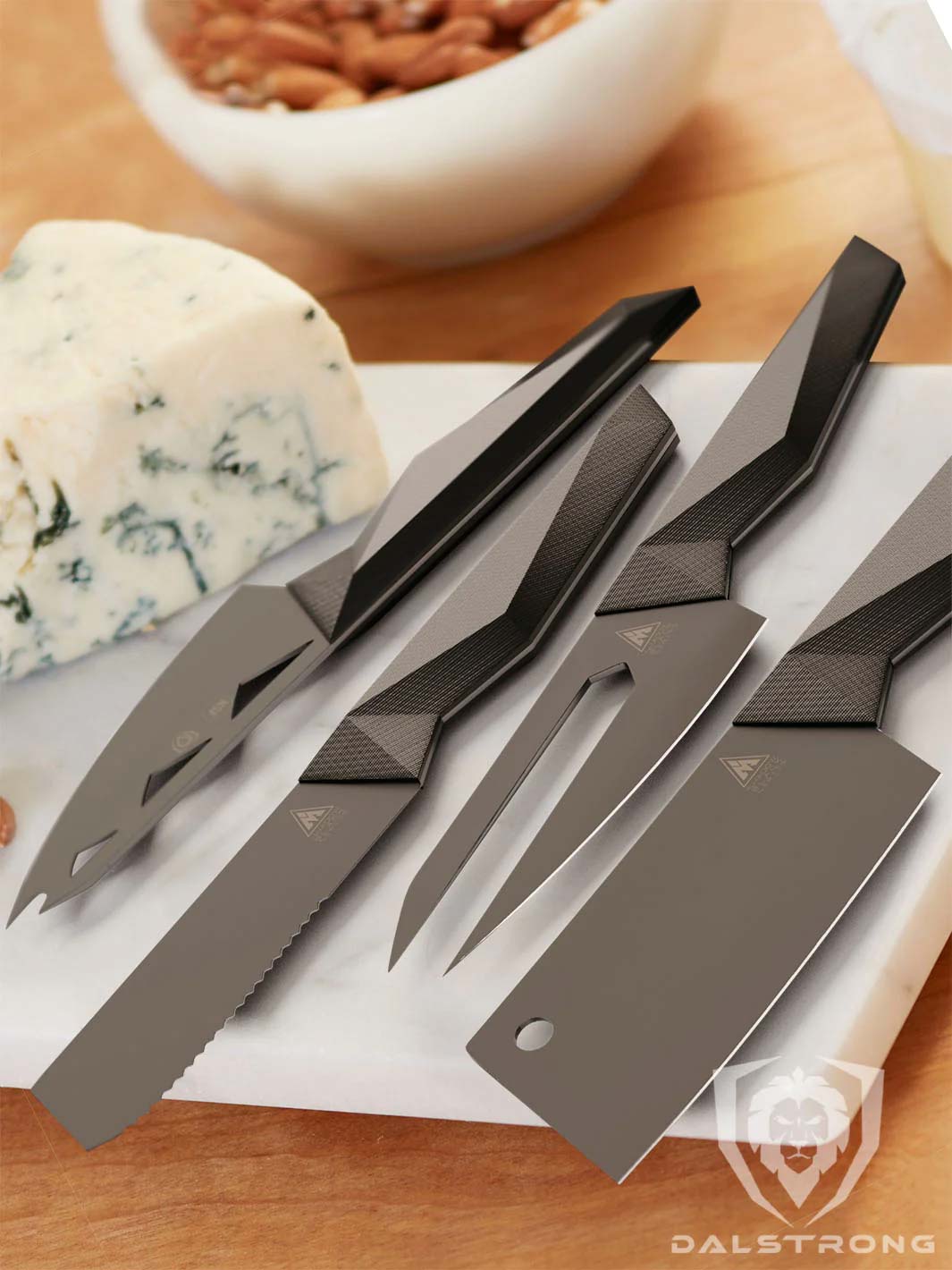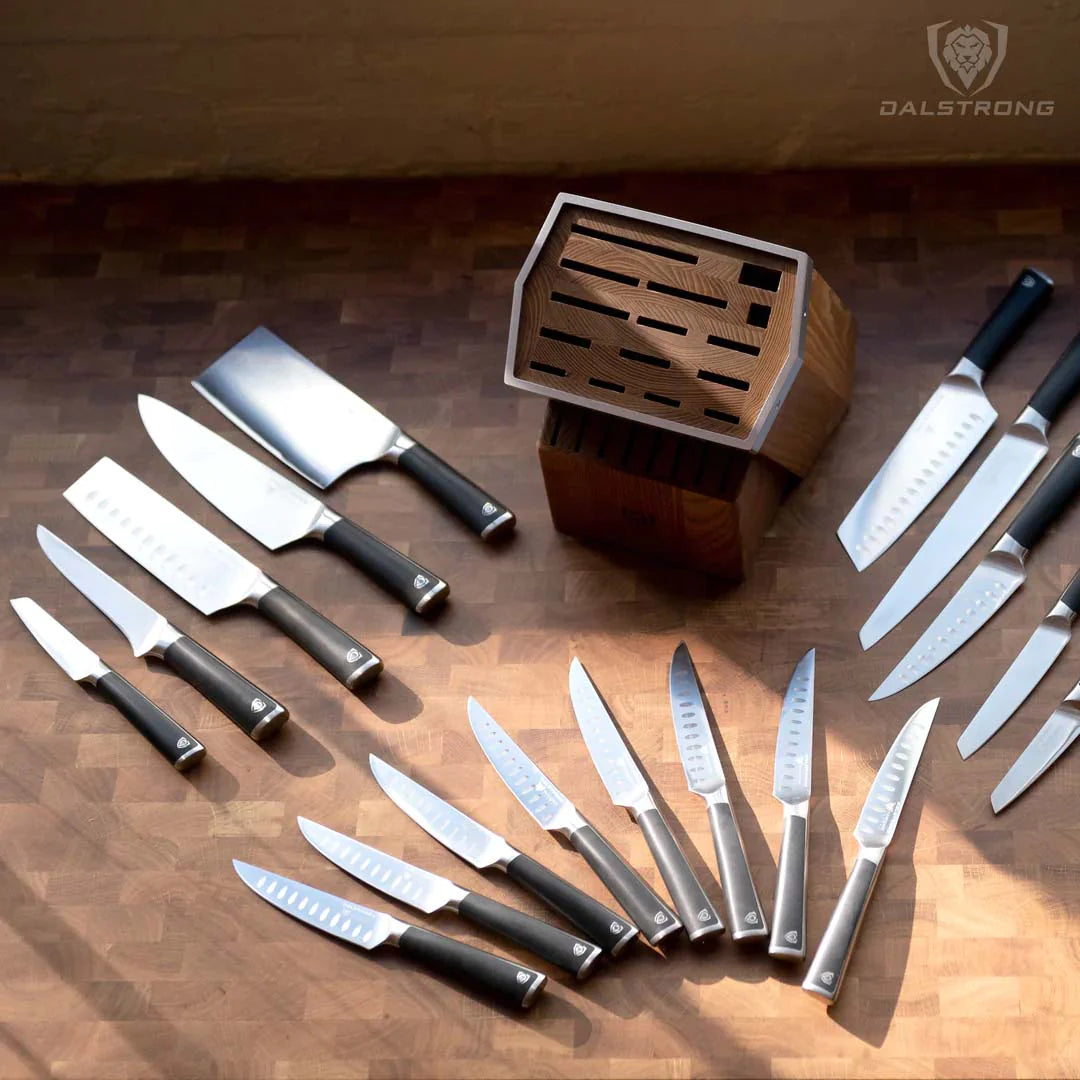10 Easy Steps To Master Japanese Knife Care
 Yanagiba & Sushi Knife 10.5" Single Bevel
Yanagiba & Sushi Knife 10.5" Single Bevel
Quick Overview: 10 Easy Steps To Master Japanese Knife Care
- Before using, be sure to clean your Japanese knife in warm water.
- After washing, dry the knife thoroughly with a clean towel.
- Store Japanese knives in a knife block, attractive rack, or knife stand.
- Do not put Japanese knives in the dishwasher.
- Choose a suitable wooden board (like teak) when cutting to reduce the pressure on the knife blade.
- Hone the knife regularly with a honing rod.
- If your knife still feels heavy after honing, it's time to sharpen it. To restore the sharpness of the blade, use a soft whetstone.
- It is important to put a light coat of food-grade mineral oil to prevent damage.
- Avoid excessive force as this may cause dents or the blade angle to be bent.
- If you are unsure about repairing your knife or need urgent repair, seek professional help.
Greetings, kitchen enthusiasts! If you've ever used a Japanese knife, you know that it's more than just a tool. It's truly a work of art. It's important to know how to properly care for your knives to maintain their sharpness and fine craftsmanship.
But have no fear. In this guide, we'll show you the secret to keeping your Japanese knife in top condition in 10 easy steps. Whether you're a seasoned pro or just beginning your culinary journey, these insights will ensure your knife performs like a legendary samurai sword and will take your kitchen skills to a whole new level.
1. Japanese Knife Care 101
 #1000 / #6000 Grit with Nagura Stone & Rust EraserPremium Whetstone Kit
#1000 / #6000 Grit with Nagura Stone & Rust EraserPremium Whetstone Kit
When you wield a Japanese knife, you're already aware of the care and power it brings to your culinary journey. But keeping that curve sharp and at peak requires some know-how.
Properly caring for your knives will improve your cooking experience and extend the lifespan of this popular kitchen tool. In Japanese knife care, regular honing and sharpening of the blades as well as proper storage, are key to keeping them at their optimal shape. Remember that a well-maintained knife performs better and lasts longer, making it a useful item for kitchen enthusiasts.
Welcome to Japanese knife care 101, where we will explain the basics of caring for these wonderful blades. Whether you're an experienced chef or a beginner, these basic steps will put your knives one step ahead of everyone else.
Read about the history of Japanese knife making, here.
2. 10 Easy Steps To Master Japanese Knife Care
 Honing Steel 8" Centurion Series | Dalstrong
Honing Steel 8" Centurion Series | Dalstrong
To improve the durability and performance of these unique blades, it is important to master the art of caring for your Japanese knife. With the right care, your knife will continue to be sharp and dependable for years to come. Here are 10 helpful steps that will help you navigate this process.
- Cleaning: Always wash Japanese knives in lukewarm, sudsy water immediately after use. Avoid using harsh scouring pads or harsh cleaners as they can damage the sharp edges of the blade.
- Drying: After washing, dry the knife thoroughly with a clean towel. Pay special attention to the handle and pads, as they can collect water and cause corrosion.
- Store properly: Store Japanese knives in a knife block, knife rack, or knife stand. Do not store it in a drawer with other instruments as this may cause scratches or damage to the blade.
- Avoid the dishwasher: Do not put Japanese knives in the dishwasher. High water pressure, strong cleaning agents, and the hassle of handling other tools can cause irreparable damage to the blade.
- Use a hardwood board: Choose a soft hardwood board to reduce the pressure on the knife blade. Avoid hard surfaces such as glass, stone, and ceramics as acid can damage the blade.
- Sharpen the blade: Sharpen your knife regularly with a honing rod. This will readjust the angle and keep it sharp. Hold the stick at a slight angle and pass the marks alternately along its entire length.
- Sharpen (whetstones): If your knife still feels heavy after sharpening, it's time to sharpen it. To restore the sharpness of the blade, use a soft whetstone or strong sandpaper.
- Oil the blade (if carbon steel): If you have a carbon steel knife, it's important to apply a light coat of food-grade mineral oil after use and before storage to prevent damage.
- Do not apply unlimited force: Do not apply unlimited force when cutting backwards as this can dent or bend the blade. Let the knife do its job and avoid excitement and curiosity.
- Seek professional help: If you are not confident in repairing your knife, or if you urgently need to repair your knife, you should contact a professional knife sharpener or manufacturer.
3. How To Clean & Store Japanese Knives
Proper storage of Japanese knives is essential to maintain their accuracy and longevity. This guide will take you via the stairs to hold your knives in pinnacle condition.
- Thoroughly Wash: First, wash your Japanese knife thoroughly with warm, lathered water. Avoid using harsh scouring pads or harsh cleaners as they can damage the sharp edges of the blade.
- Gentle Drying: After cleaning, dry the knife completely with a dry cloth. Be especially careful not to let water collect on the handle or pads, as this can lead to corrosion.
- Avoid the dishwasher: Do not put Japanese knives in the dishwasher. High water pressure, harmful cleaning agents, and handling of other tools can cause irreparable damage to the blade.
- Store wisely: Store your Japanese knives on a knife block, attractive shelf, or knife stand. Avoid storing it in a drawer with other instruments as this may scratch or damage the blade.
4. Regular Sharpening & Honing Of Japanese Knives
Maintaining the sharpness of your Japanese knives is essential for precision and safety in the kitchen. Regular sharpening and honing are key practices to ensure your knives stay in optimal condition. Let's delve into the details:
Honing
Honing is an important step in improving the blade of a Japanese knife. We use honing rods, also known as honing steel. Here's how to do it:
- Hold the rod handle firmly, making sure it is vertical and the tip is in a safe place.
- Hold the knife next to the honing bar at a 15-20 degree bend. The bend of the knife should point upwards.
- Start sharpening from the bottom of the blade by dragging the knife at an angle along the bar. Apply a light coat to the other side and alternate rubbing until both sides are covered.
- Be sure to alternate sides between performances to ensure uniform polish.
Sharpening
Sharpening a Japanese knife is a more complicated process than honing. This involves removing a small amount of metal to create a new, pointed edge. You can proceed as follows:
- Choose the right whetstone for your knife. Soak in water according to the manufacturer's instructions.
- Most Japanese knives have an angle of about 15 degrees. Adjust this edge to match the mark on the stone.
- Start sharpening from the base of the whetstone. Hold the knife firmly and move it over the stone in a controlled manner, changing angles. Apply even pressure and cover the entire width of the blade.
- Once you've achieved the desired sharpness on the coarse side, flip the whetstone and repeat the process on the finer side.
- After sharpening, it is important to hone the blade. This realigns the bend and ensures razor sharpness.
Frequency
Honing should be done regularly, even as often as before every use. It helps maintain the edge between sharpenings.
How often you sharpen depends on how often you use your knife. For home cooks, every few months is enough. Professionals and casual users may need it more often.
When sharpening Japanese knives, remember that practice and patience are important. Over time, you'll get better at keeping your knives in top condition.
5. Must-Have Dalstrong Japanese Knives
1. Kiritsuke Chef's Knife 8.5"
The Dalstrong Omega Series 8.5-inch Chef Knife Collection Set is a culinary masterpiece, suitable for experienced chefs and collectors alike. This set combines cutting edge technology with stunning aesthetics to provide a complete new meal prep experience.
PROS:
- This knife is part of Dalstrong's popular Omega series, which is known for its superior craftsmanship. The blade is made from BD1N-VX hyper steel known for its durability, sharpness, precise cuts.
- This knife features an impressive and distinctive blade pattern which is designed to allow the blade to glide smoothly through the food, making perfect cuts and minimizing food damage.
- The G10 woven fiberglass handle is not only aesthetically pleasing, but also ergonomically designed to provide a firm and secure grip
- This set comes with a matching knife sheath, which completes the whole package and makes it a great bag advantage for food lovers.
CONS:
- For those accustomed to traditional Western knife designs, this look may take some time to get used to.
2. Nakiri Vegetable Knife 6" Shogun Series ELITE | Dalstrong
The Dalstrong Shogun Series Elite 6-Inch Nakiri Knife is a testament to the quality and performance that characterizes the Shogun Series. This knife is carefully crafted to meet the unique needs of chefs and food enthusiasts, especially those who take pride in their food preparation.
PROS:
- The flat, square shape of the Nakiri knife is suitable for all kinds of vegetable work, making it the perfect tool for those who value vegetable preparation.
- Crafted from Japanese AUS-10V Super Steel, known for its durable and extremely sharp blade.
- The brand's Tsunami Rose design adds an elegant touch and showcases the attention to detail that Dalstrong is known for.
CONS:
- Nakiri knives are great for vegetables, but they may not be as capable as a chef's knife for a variety of kitchen tasks.
3. Kiritsuke Chef's Knife 8.5" Shogun Series ELITE | Dalstrong
The Dalstrong Shogun Series Elite 8.5-inch Cutting Chef Knife represents the finest culinary craftsmanship of the Dalstrong Shogun Series. Its unique shape offers unparalleled precision and performance, making it a versatile tool that can be used for a variety of dishes.
PROS:
- This knife is made from Japanese-made AUS-10V super steel with a very sharp 8-10 degree on each side, ensuring superior cutting performance.
- The G-10 Gallolite handle provides stability and comfort. The ergonomic structure allows you to hold it securely even after long periods of use.
- The knife is perfectly balanced and gives you absolute control in every cut. This allows users to perform tasks reliably and accurately.
CONS:
- The size might be a little big for those just starting to collect knives in the kitchen.
4. Tuna Knife 17" Ronin Series | Dalstrong
The Dalstrong Ronin Series 17-Inch Youth Knife is an excellent tool designed for the specific task of precisely cutting and filleting large fish. Crafted with care and expertise, this knife is a testament to Dalstrong's commitment to providing the finest and most unique knife designs.
PROS:
- The design of the knife allows for precision cutting and filleting of big fish such as tuna. The width and flexibility allow you to cut meat neatly without damaging it.
- Made from ultra-premium Japanese high-carbon AUS-10V steel, this blade guarantees exceptional precision and durability. It is extremely powerful and meets the needs of professional kitchens.
- The long ergornomic handle provides complete grip and control, allowing chefs to maneuver around corners with ease.
- The knife design and materials are susceptible to corrosion, ensuring quality and stability even in demanding kitchen environments.
CONS:
- Due to the long length of the knife, choosing a suitable storage location for the knife may be considered.
5. Santoku Knife 7" Delta Wolf Series | Dalstrong
Dalstrong's Delta Wolf Series 7-Inch Santoku Knife is a powerful tool that features a unique blade shape that is meticulously crafted to excell in a variety of kitchen tasks such as slicing, dicing, mincing, etc.
PROS:
- Made from ultra-sharp, wear-resistant, high-carbon 9CR18MOV steel at 60° Rockwell Hardness, this knife offers superior sharpness and resistance to corrosion. This ensures that the knife will perform reliably even with frequent use.
- The G-10 camouflage handle is not only sturdy and unique but is also ergonomically designed to provide a superior grip and minimize fatigue, especially in busy kitchens.
- The blade has black, non-reflective titanium-nitride coating which not only enhances its non-stick properties but also helps toughen up the blade.
CONS:
- Although the handle is ergonomically designed, preferences regarding the look of the knife vary for some users.
6. Frequently Asked Questions
How do you take care of a Japanese knife?
To clean your Japanese knife, wash it with lathered hot water immediately after use and remove any dirty scrubbing brushes. Dry thoroughly to prevent corrosion. Place it in a knife rack or knife block. Regularly improve your knife and polish it as needed. Do not use excessive force when cutting, and never put it in the dishwasher. Apply mineral oil to carbon steel knives to prevent rust.
How do you protect Japanese knives?
To protect your Japanese knife, regular honing and sharpening are needed. It is also important to know how to properly clean and store them in your kitchen area. Always avoid storing them with other utensils and make sure to use a nice quality cutting board in various cutting tasks to help protect the blade in each use.






































































































































































